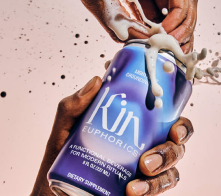You know when someone tells you you’re amazing and that anyone would be lucky to have you, and then you never hear from them again? That’s kind of what cart abandonment feels like. To take away some of that sting, you can send them emails to hopefully bring them back. And to do that, you’ll need the help of some engaging abandoned cart templates.
Before we get to those, let’s cover some of the basics when it comes to these email campaigns — like why they are so important to your retention marketing strategy.
With cart abandonment rates as high as 80 percent for some companies, that’s a lot of revenue you are missing out on if you aren’t doing something to bring them back. That’s why it’s imperative you set up an automated cart abandonment email series to send those wayward shoppers back to their carts to convert.
But don’t just take our word for it. Check out some of these encouraging abandonment rate statistics that will help you forget that 80-percent one we threw at you already:
- Since 2016, open rates for cart abandonment emails have stayed around 45 percent.
- Cart abandonment email click-throughs are at about 21 percent.
- And 11 percent of abandoned cart emails result in a conversion.
Those stats show you that when you reach out to customers with a targeted message after they take action, you can get results. You’re able to recognize when a customer is interested in a product (they did just add it to their cart, didn’t they?), and you can then reach out to them and send them to their cart.
Win them back
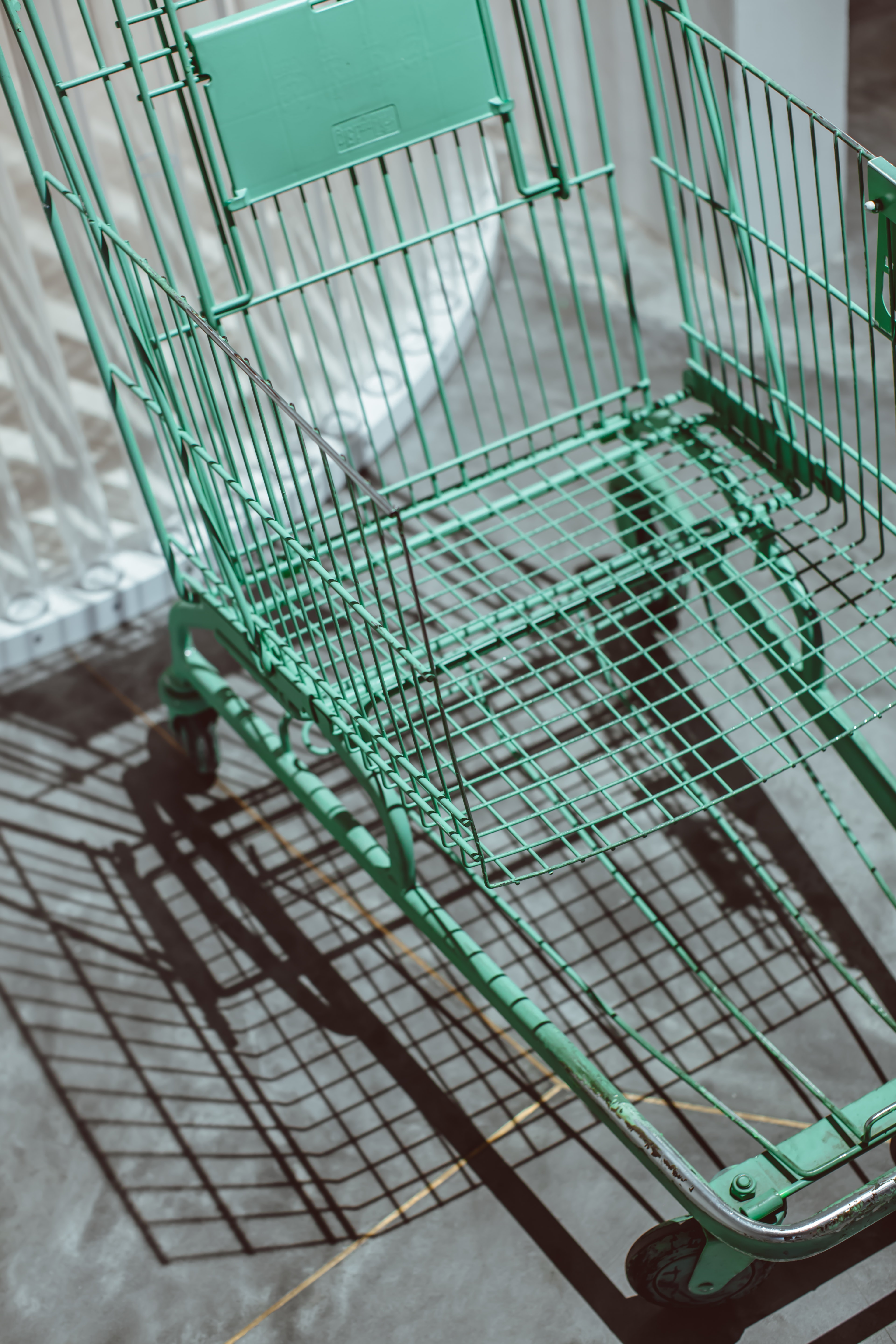
Ready to start experiencing some of those numbers for your brand? We’ll walk you through ways to do that in this guide, covering topics including:
- What is cart abandonment?
- What are abandoned cart emails?
- Platforms you can use to send these emails
- Cart abandonment email strategies
- Examples of abandoned cart templates and emails
- Is it legal to send abandoned cart emails?
We’ll share tips, techniques, abandoned cart templates, and more that will help you improve the effectiveness of your abandoned cart emails.
What is cart abandonment?
The shopper has browsed your site, added one or more items to their cart, and left for some unknown reason, never completing their purchase. For example, we’ve added this item to our cart on Amazon. But instead of clicking the button to checkout and providing our billing and shipping details, we left the website altogether.

The idea of “cart abandonment” is the equivalent of someone walking into a brick-and-mortar store, putting items in their cart, and then leaving before heading to the checkout counter.
It’s pretty straightforward, but that doesn’t make it hurt any less. Luckily, there are things you can do to bring them back, and one of the best methods is via email.
What are abandoned cart emails?
This type of email marketing campaign helps you recapture lost sales by engaging shoppers who abandoned their carts. Basically, the email reminds them to complete their transaction — of course in a nice, fun way.
If you’ve ever added a product to your cart and then ditched it, you’ve seen exactly what we’re talking about. They have subject lines like, “Did you forget something?” or “Your cart misses you.”
Inside the email, you’ll most likely find some engaging copy that encourages them to head back to their cart, along with a photo and description of the product(s), and at least one CTA. Some brands also include information on their shipping, returns, and other selling points at the bottom of the email.
How do these emails work?
Abandoned cart emails are examples of automated campaigns. Here’s how they work:
- You have an online site/platform that tracks user actions on your site.
- Your platform records the products they browsed, what they left in their shopping cart, and their purchases.
- With that information, you can then send automated emails to the shoppers after they abandon their cart.
So once the shopper adds an item to their cart and leaves your site, the platform will register this action (or lack of action, really) as an abandoned cart.
E-commerce sites like Shopify and BigCommerce will automatically track the shoppers’ actions and metrics, making your job that much easier. (And Retention.com has integrations with both of those platforms that allow you to track your revenue from contacts we provide.)
Some of these e-commerce platforms have basic abandoned cart emails, but you can also integrate with your email service provider (ESP) to create and house them there. That will give you more options when it comes to abandoned cart templates. You will simply need to integrate your e-commerce shop with your email marketing tool to create fully customizable, multi-step email campaigns that send multiple emails at certain times based on when they abandoned the cart.
Whether you use the basic abandoned cart templates available in the e-commerce platforms or in your ESP, these will automatically be sent out to potential customers who have abandoned their carts.
Abandoned cart email templates via e-commerce platforms

While you will be more limited when it comes to abandoned cart templates on sites like Shopify, BigCommerce, and WooCommerce, you can use these platforms to send your abandoned cart emails. So, we’ll walk you through how you can create emails on these platforms.
Shopify
You’ll find some basic functionality on Shopify when it comes to creating and managing your abandoned cart emails by going to Settings > Checkout (under Abandoned Checkouts). However, if you want to be able to control the abandoned cart templates and content, you’ll have to install an app like Consistent Cart App, Abandoned Cart Recovery, Jilt, or Privy.
WooCommerce
Since WooCommerce doesn’t have built-in functionality for cart abandonment emails, you could use either the platform’s official extension, Follow-Ups, or a free plugin like Abandoned Cart Lite for WooCommerce.
If you go with the plugin option, you’ll see a new section in your WooCommerce dashboard: Abandoned Carts. That section will be where you can check recovered carts, edit your email content, change the sending settings, and other features.
BigCommerce
Of these three e-commerce platforms, BigCommerce is the only one that gives you full control over your abandoned cart emails. You’re able to control the email design — like what products, text, and images they include — as well as how many emails and when you send them. You’ll find the settings in Marketing > Abandoned Cart Notifications.
Third-party email marketing tools
If you want to go beyond basic abandoned cart templates and settings, it’s time to turn to a third-party ESP. That will give you full control over the look, text, and automation functions.
You can integrate your ESP with your e-commerce platform making it a seamless transition: They leave something in their cart, and the ESP triggers an automated email campaign series that will (hopefully) bring them back to their cart. There are dozens of ESPs to choose from, so find one that best fits your needs.
Cart abandonment email marketing strategies
Now that you have a way to send shoppers an abandoned email, you need to know what tactics that email should include to increase your chances of bringing them back. Here are six ways to boost your recovery rate.
- Build trust and credibility.
- Put your loyalty program to use.
- Focus on one product (sometimes).
- Implement an automation series.
- Create a sense of urgency.
- Address issues that might have kept them from purchasing.
Now, let’s dive into each of these techniques a bit more to see how you can implement them into your cart abandonment email strategy.
1. Build trust and credibility
In this day and age, it’s harder to earn online consumers’ trust because they’ve become accustomed to scams and unprofessional business practices on the Internet. If they’ve never done business with your brand before, you have to work even harder to earn their trust if you expect them to return to their cart and make a purchase. They aren’t going to turn over their credit card information to just anyone.
You can do that by showing them customer reviews and ratings for the product(s) they left in their cart. Make sure your site and emails look professional and include the basics: physical address, reply to email address, logo, and any payment verification information (showing it’s safe for them to use their credit card on your site).
2. Put your loyalty program to use.
Everyone loves a good discount. That’s why you see so many abandoned cart emails that offer shoppers a deal if they come back to their cart. For example, “We have great news! That [PRODUCT] you liked is now 20 percent off!”
But as consumers become accustomed to this tactic, it can lose its effect. So, instead of offering them a deal, try a different approach by giving them rewards in your loyalty program. Again, this is something you can try out to see if it works better than your regular discount message.
You could give them enough rewards points to move up to the first/next tier in your loyalty program — which then gives them a discount. Maybe 100 points is enough for a 10-percent discount. Or, 200 points will give them a $10 discount. They are still getting a deal out of returning to their cart and making a purchase, but you go about it in a different way — and they are able to move up in your program in the process.
3. Focus on one product.
It can be tempting to include both the item they left in their cart and also other recommended products in an attempt to up-sell the shopper or catch their attention. While it’s a good practice to try different approaches with your cart abandonment emails, try only focusing on one product when they add multiple, similar items to their cart.
For example, if a shopper has five different computers in their cart, you can bet they don’t plan on purchasing all five of them — or at minimum, they don’t have equal purchasing intent for all of them. So, your abandoned cart template could include one of the items as the main image, along with the product description.
4. Implement an automation series.
Sending one email letting them know they forgot something in their cart is most likely not going to be enough. Just like you would send someone multiple welcome emails, you need to create an automated series to engage shoppers who have left items behind.
Don’t wait too long before sending the first email in the series. The moment an online shopper leaves their cart, your opportunity to engage this potential customer is narrowing. To make the most of this opportunity, make it a priority to reach out to shoppers within the first hour of cart abandonment. Make this part of a three- or four-email sequence to engage with the shopper.
For example, the first email can go out an hour after they abandon their cart. Then, the next one can follow up one or two days later if they don’t complete their purchase, using a different approach with the email’s content and approach.
If both of those email attempts don’t work, you can try a third (or fourth) campaign that focuses more on the product’s category or general new products. They might not have been that interested in what they added to their cart, so taking a more general approach might be a better way to engage them. The third or fourth email attempt is more of a last-ditch attempt to re-engage with a shopper who has been unresponsive to the first ones in the series.
Sending more than three or four runs the risk of annoying the recipient and getting placed in their spam folder. And we all know that’s the last place you want your messages to go.
5. Create a sense of urgency.
There’s nothing like a reminder that a certain deal is about to expire or that the product in their cart is about to sell out to push them to take action. Use that fear of missing out and urgency as a marketing tactic.
Subject lines are a great place to include this method:
- These products won’t last for long
- Going, going, almost gone!
You can also let them know they only have a certain number of days until the items will be removed from their cart. And who really wants to have to go and add them back, right? Find a way to motivate them to head back, sooner rather than later.
6. Address issues that might have kept them from purchasing.
There are a dozen reasons why they may have left their cart behind. Maybe they changed their mind or found something else they liked better. There’s not much you can do about those two things, but there are other potential roadblocks you can remove and/or address to get them back:
- Include your shipping prices and turnaround time in the email.
- Let them know your returns policy.
- Show them your accepted payment methods (and make sure you have several).
The more potential issues you can eliminate and be proactive about, the better your chances are that they will come back.
Examples of abandoned cart templates and emails
One of the best ways to get ideas for your brand’s abandoned cart emails is to see what other brands are doing and what templates are available in different ESPs. So, we’ve put together a list of templates and real email examples to get your creative juices flowing. You can find others in your ESP’s template library, depending on which platform you use.
We’ll also show you what we like about the actual examples and what they could have done better.
Don’t forget me (template)
Robly has several pre-designed abandoned cart templates, in addition to other template options you can design to be for abandoned cart emails. Here’s the first of three template examples we’ll show you:
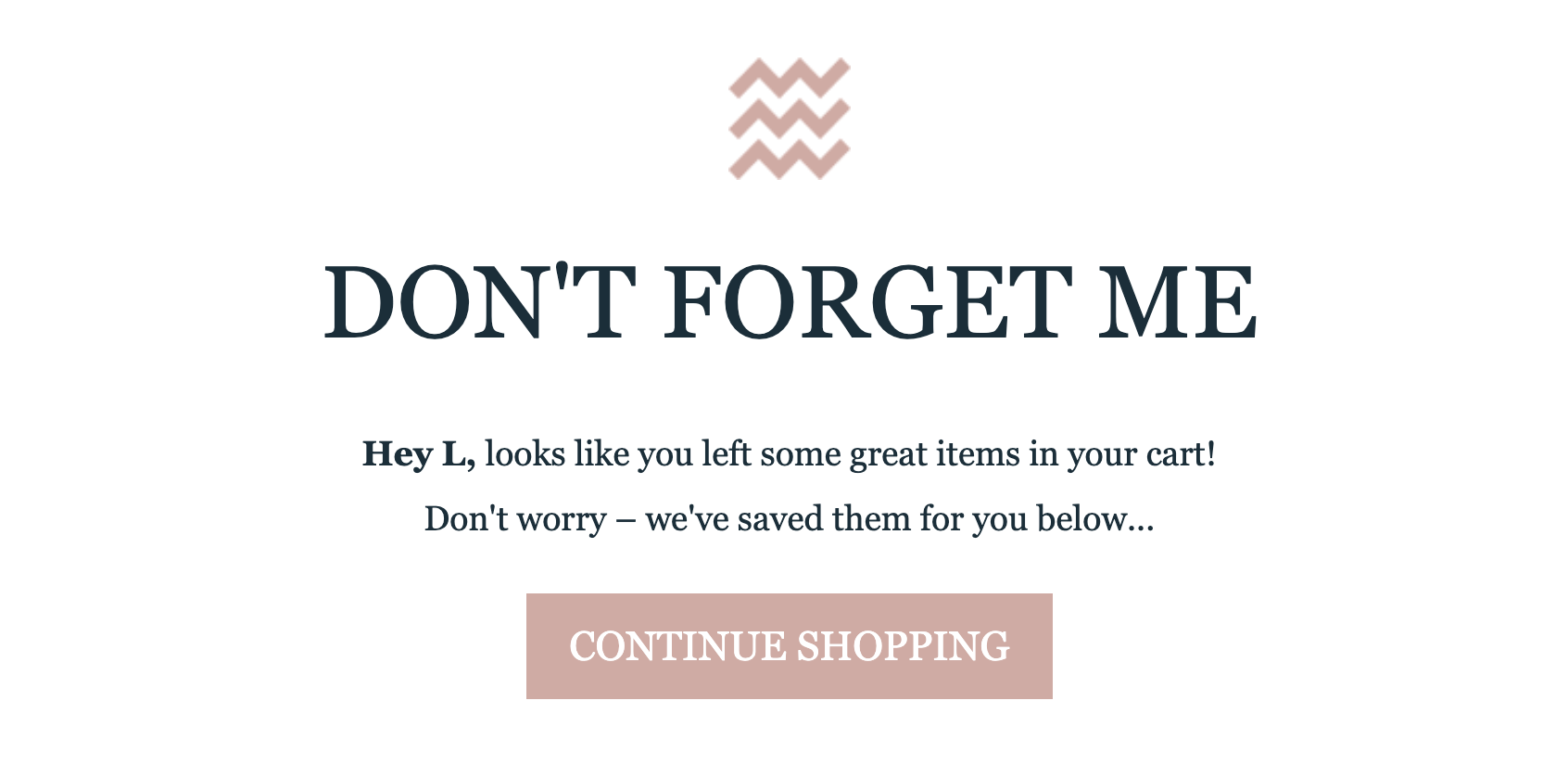
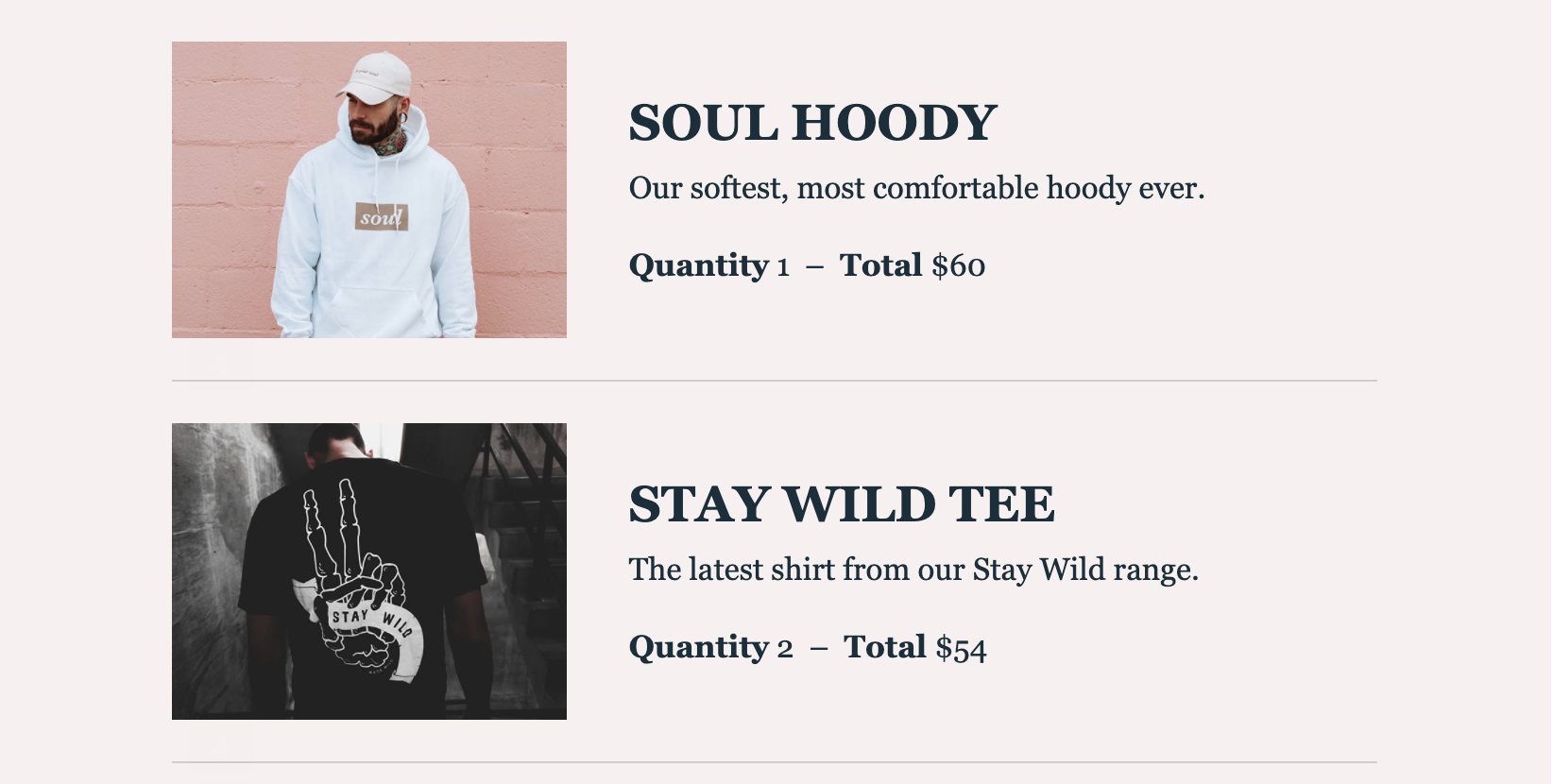


And being a template, you can edit the text, colors, images, links, and everything else to best brand your email.
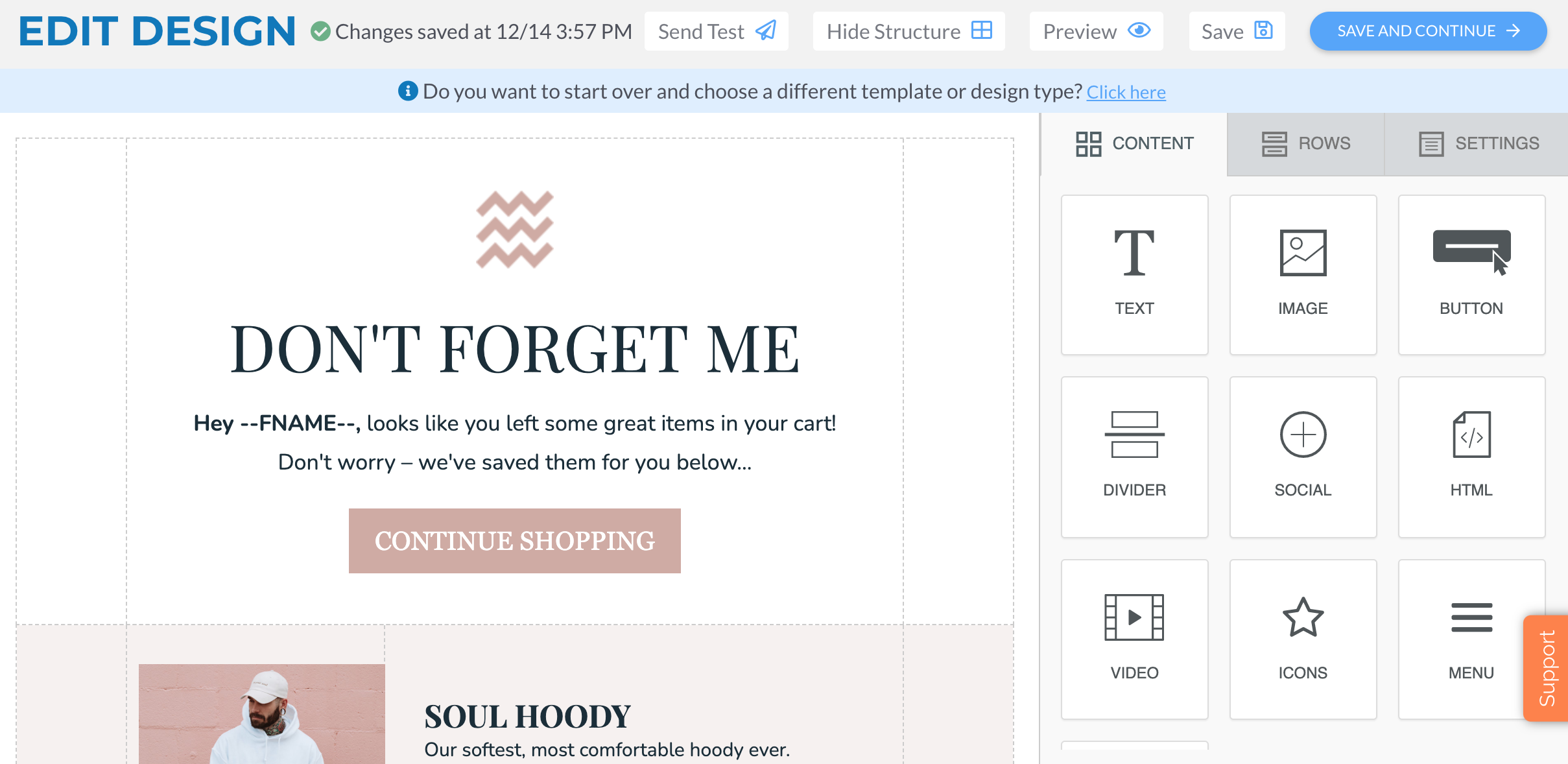
Obviously, you’ll need to change out the photos, product descriptions, branding, etc. with your own materials. But what we like about this template is that it gives you usable text — like “Don’t Forget Me” and “Hey [FNAME], looks like you left some great items in your cart! Don’t worry, we’ve saved them for you below.” The CTAs even fit the content, so you can use what’s already there.
Topo Designs (email)
Subject line: Go ahead, take another look
This email from Topo Designs doesn’t scream “abandoned cart,” but that helps make it different and less forceful. (Though the subject line does allude to it.) When you first look at it, the email seems to be about offering customers a deal on items the brand thinks they will enjoy. But when you scroll down, you see that there’s an item that was left in the cart.
The approach in this abandoned cart template would be especially effective if it was used in the second or third email in the series.
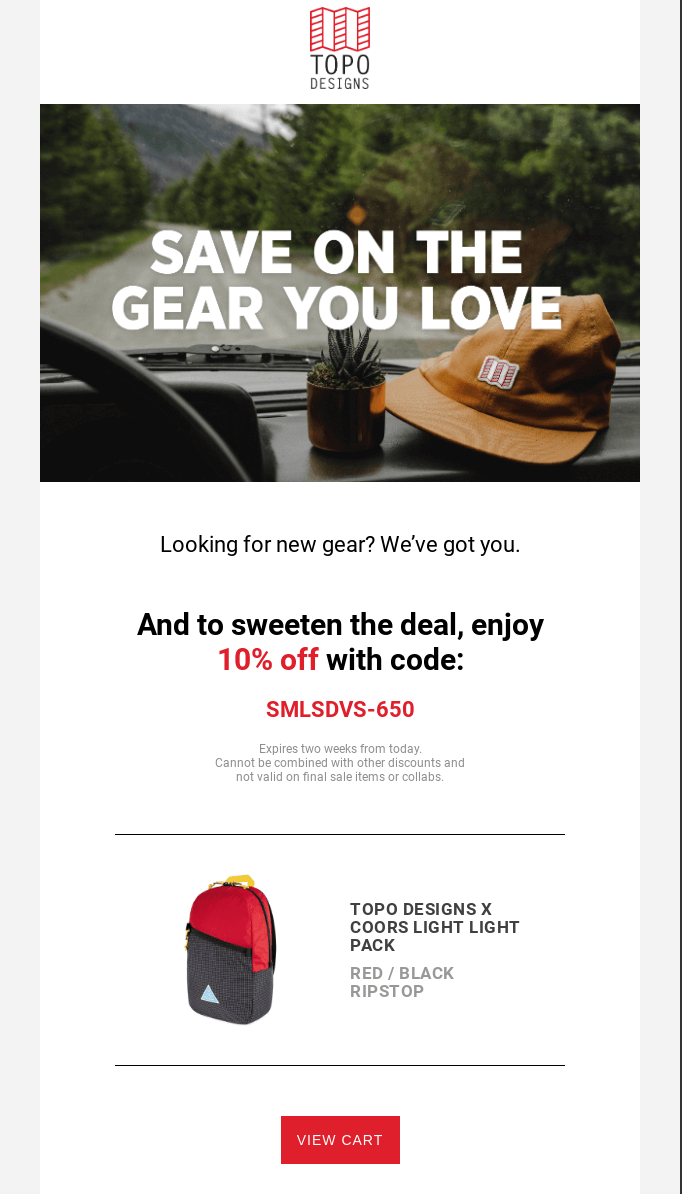
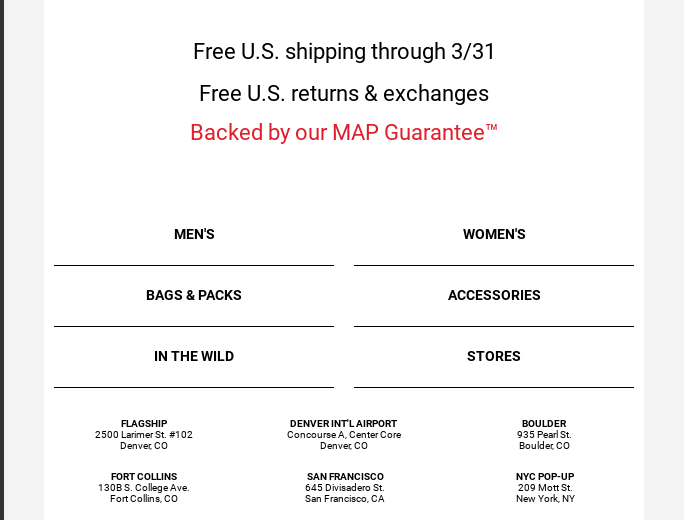
What else we like:
- They show a product photo, description, and clear CTA that just so happens to match the product colors.
- Knowing shipping and returns can be a hurdle for many online shoppers, the brand addresses that by letting the shopper know both of those are free.
- They close out the email by including links to their different departments, in case the shopper would be more interested in one of those. That gives them choices without throwing a dozen different products into the email, which can be overwhelming.
- There’s also a list of their locations with addresses, which adds credibility to the brand.
What could have been better:
- They don’t include the product’s price, and we feel like the shopper will want to know that before heading back to their cart. Since this email offers a discount, the price could even be marked out and show the new price with the 10-percent discount applied.
Still not sure? (template)
Another Robly option, this abandoned cart template shows how the email design can be as targeted and personalized as the text. The header image is a pair of headphones, the same thing they added to their cart.
Sure, you might not be able to have an image like that to match each product, but you could probably create one for your main categories — like a shirt for the clothing department, a computer for electronics, or flowers for the gardening/outdoors category. Anything you can do to personalize the email, the better.
This template also comes with filler text that you could use as is (after changing out the products and images, of course): “We noticed you found these [PRODUCTS] but haven’t checked out yet — here’s some more details to help you decide!”
The template then includes the product photo, price, a product review, and star rating. And of course, there’s a CTA to take them back to their cart.
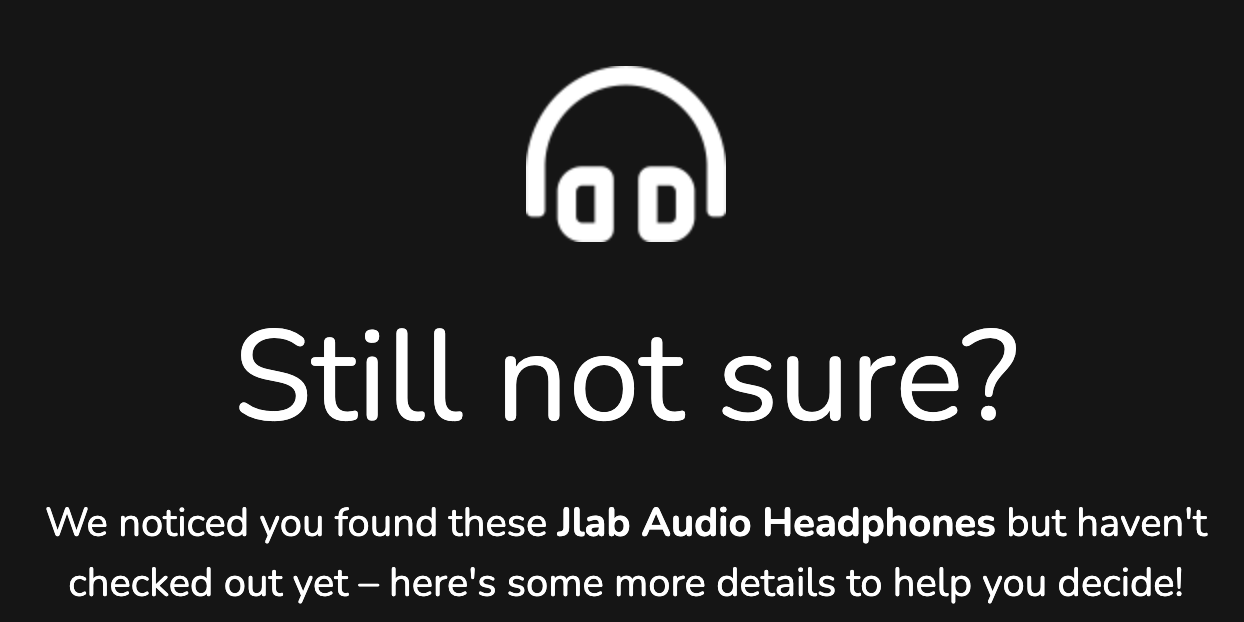
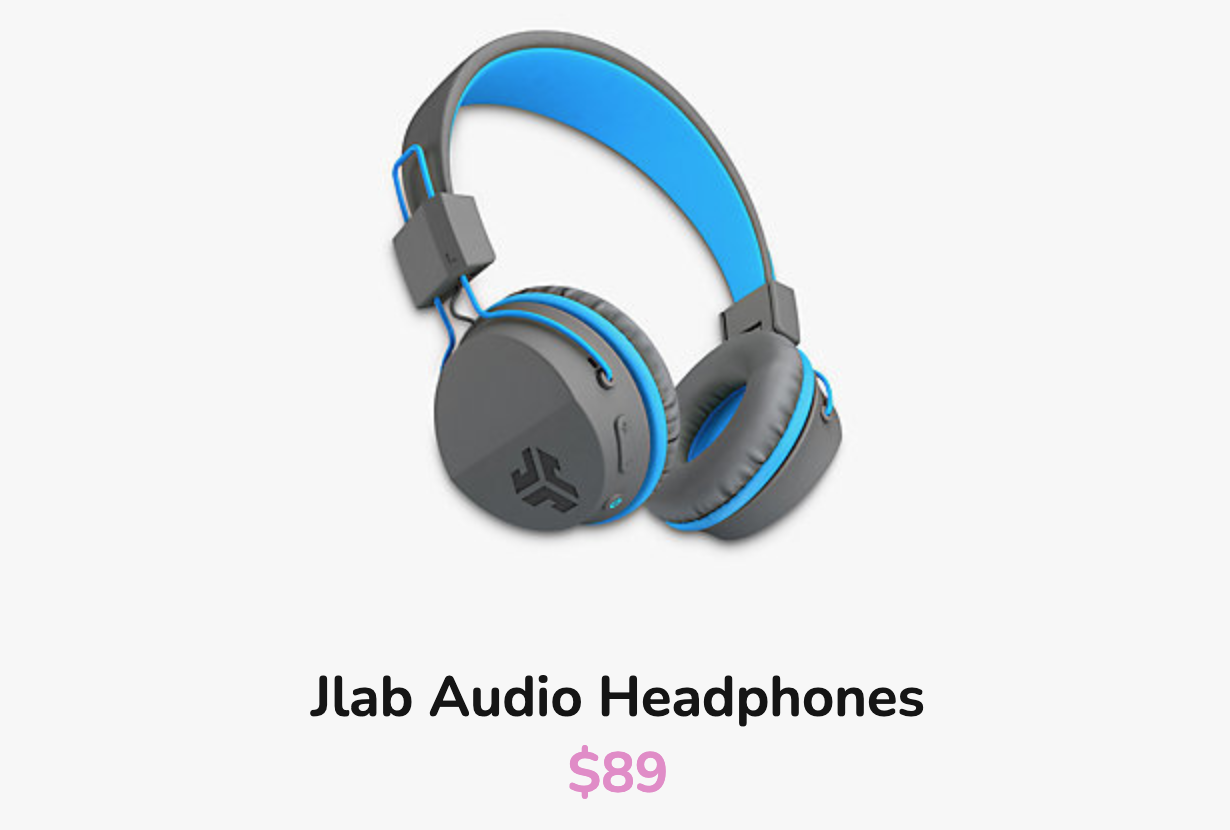
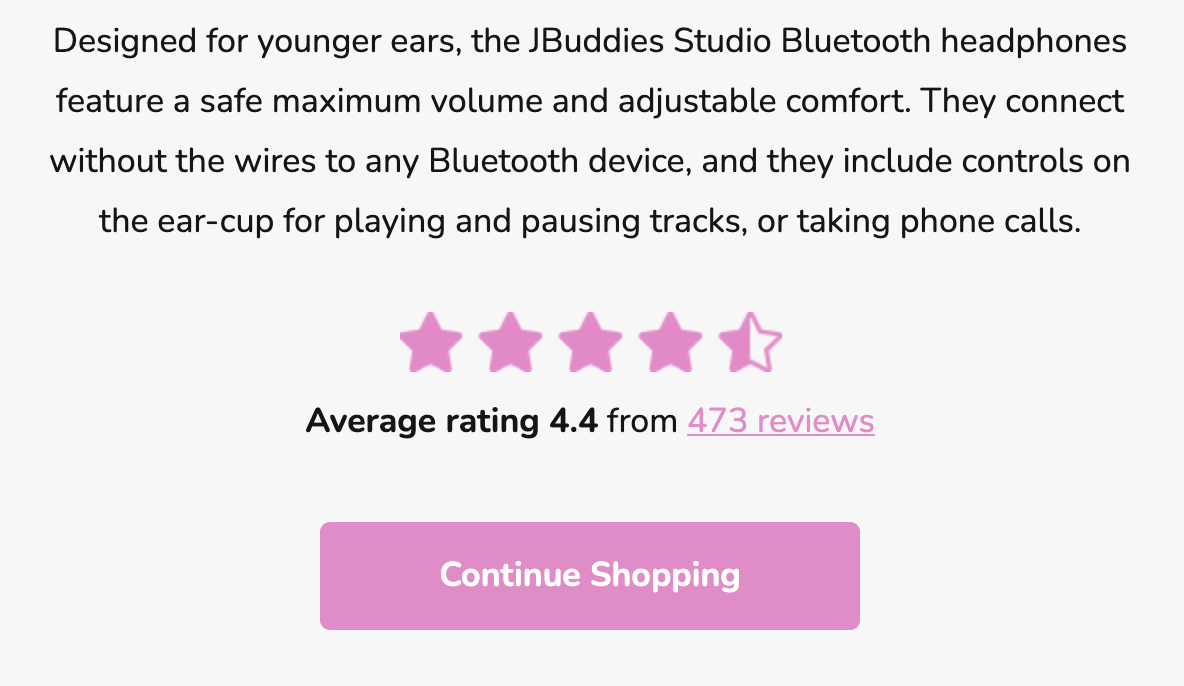
Nomad (email)
Subject line: Nomad Gear is Selling Out Quick
Selling accessories for electronics, Nomad really nails its brand with this abandoned cart email example: “Did your Wi-Fi crash? Fret not — we saved that shiny Nomad product you were just ogling.” The Internet and electronic accessories go hand in hand, and it’s also a lot more fun to read than, “You left something in your cart.”

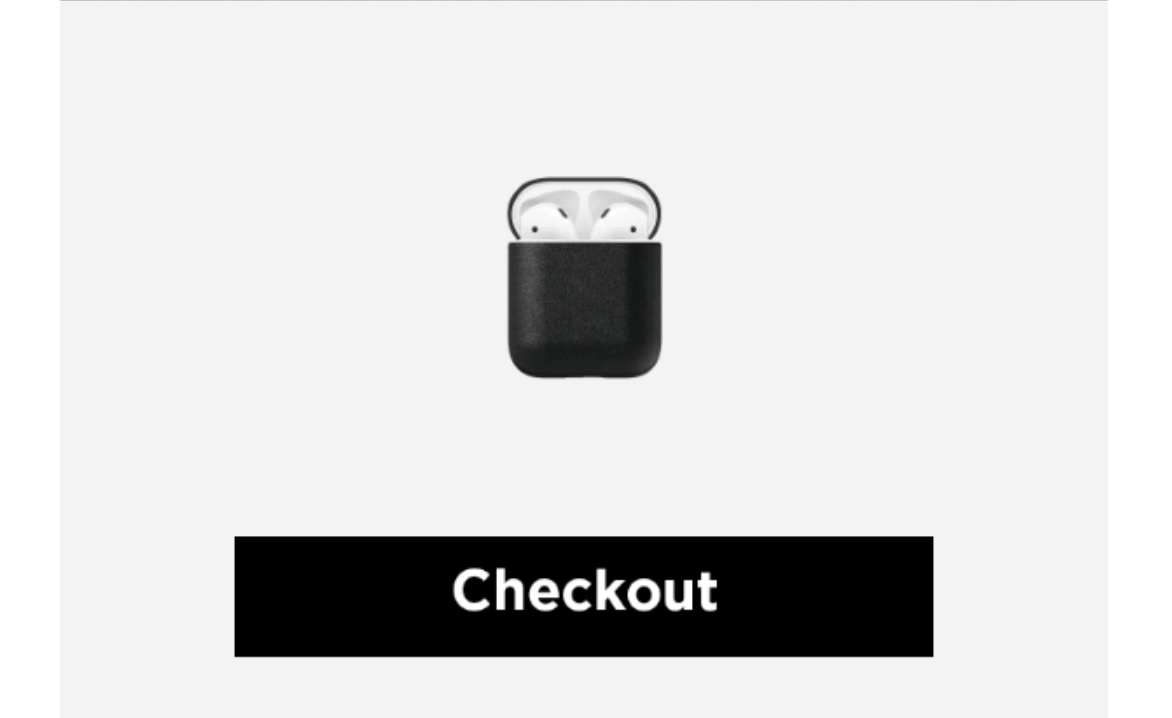

What we like about this email example:
- The color scheme works with the brand and product.
- There are two CTAs, so one will be in view no matter how far they’ve scrolled down in the email message.
- The opening text says they were viewing this product, but it doesn’t specifically say the item was left in their cart. They get the point across without spelling it out, and we like that.
What they could have done better:
- In the opening text, they reference “that shiny Nomad product.” We think this would be more impactful if they included the actual product name — or at least the product category.
- While we like the email having two CTAs, we aren’t in love with the text, “Seal the Deal.” Something stronger might have a better click-through rate, like if they swapped the CTAs, putting “Checkout” at the top and “Seal the Deal” at the bottom. But again, these are our opinions.
You left something (template)
The last of the Robly abandoned cart templates goes straight for a personalized approach with the header having their name front and center: “[FNAME], you left something behind!”
The design then gives you a spot to put the product photo, name, quantity, and price. While it’s not the main focus of the email, there’s also a place to give them a discount code at the bottom.
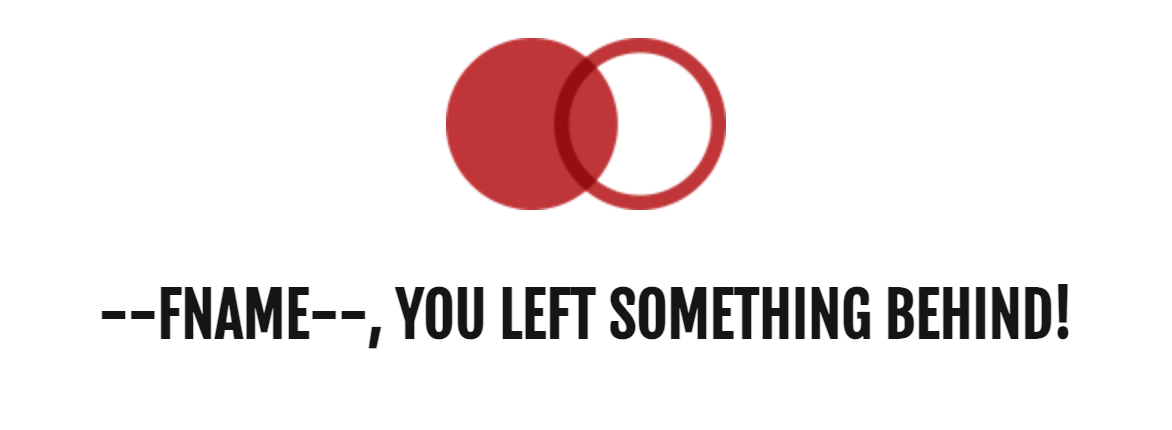


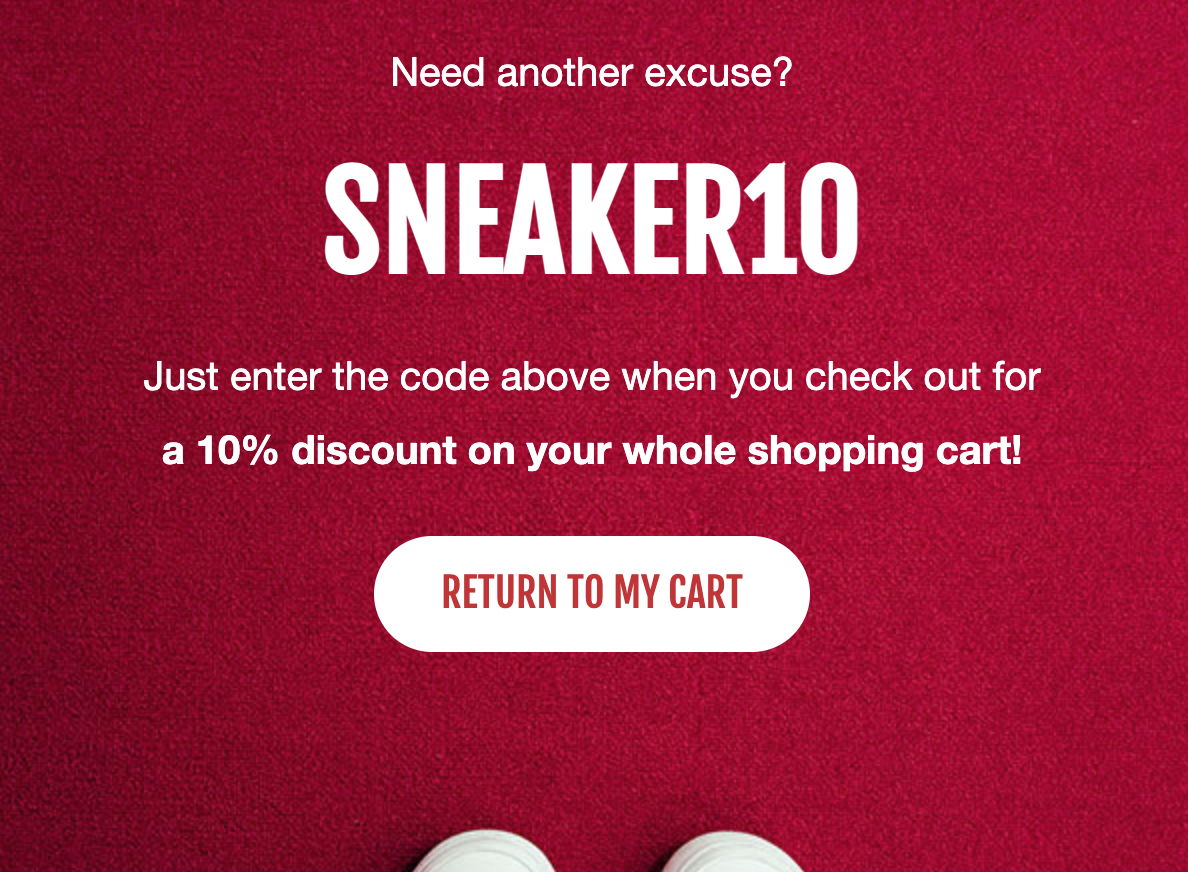
Public Rec
Subject line: You forgot something
Seeing this abandoned cart email from Public Rec makes us happy that a brand is addressing some of the consumer's top concerns right away. Right after their header text, “Take another look,” they go straight into, “Enjoy free shipping and free returns on all orders.” If a shopper failed to purchase the items in their cart because they were concerned about either of those things, now they know those won’t be an issue and can complete their purchase.
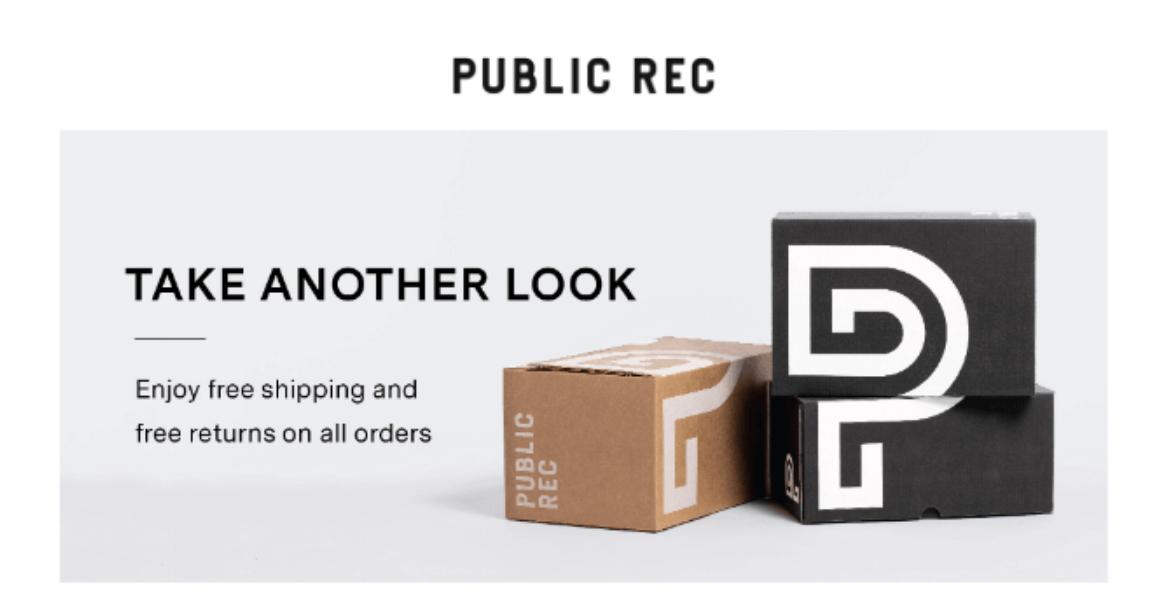
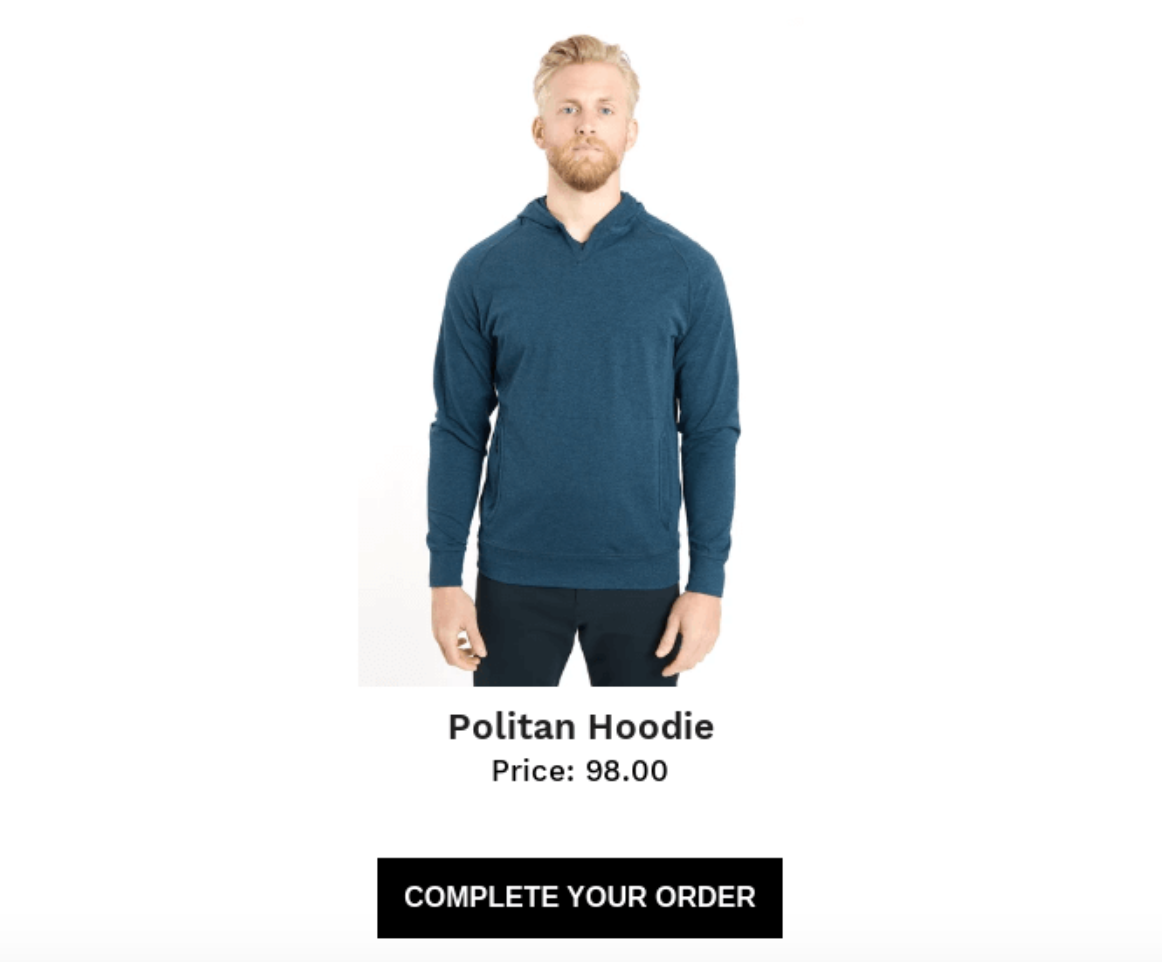
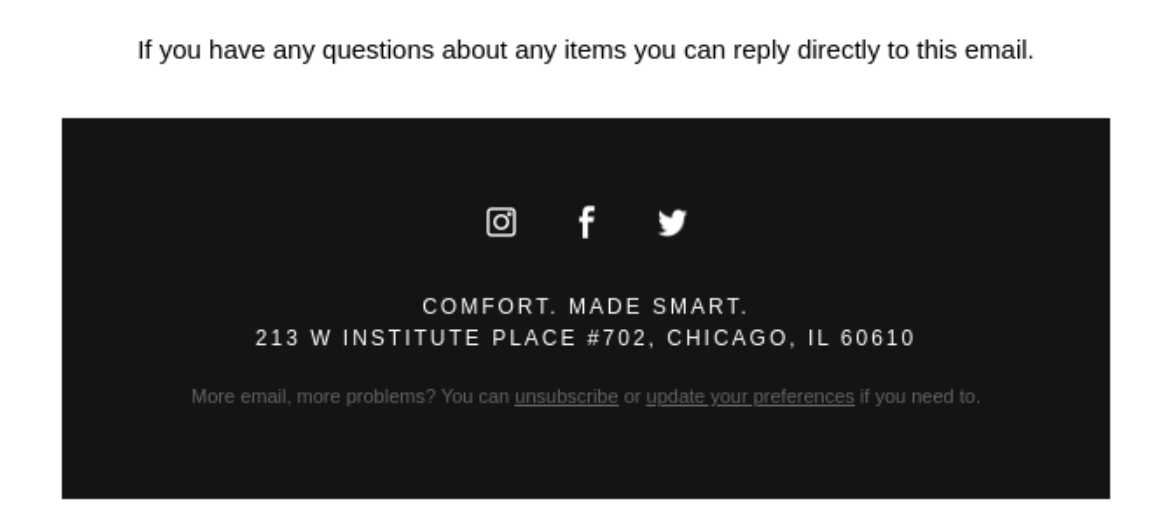
Here are more things we like about this email:
- They include the product photo, description, and price.
- There’s a clear CTA: “Complete your order”
- Shoppers can reply directly to the email if they have questions, which isn’t always the case with email marketing campaigns. The less work they have to do to get in touch with your brand, the better.
What they could have done better:
- We like this email if it’s the first in the abandoned cart series, but if it’s a later email, they could have added recommended/related products to show more options.
Mailchimp (template)
Mailchimp also has abandoned cart email templates, which include a default logo placeholder and Cart content block. That block inserts the abandoned item(s) into the follow-up emails. You can also use one of their other email templates. Just be sure to drag a Cart content block into the email layout.
They offer three pre-designed abandoned cart templates:

Here’s an up-close look at one of them:
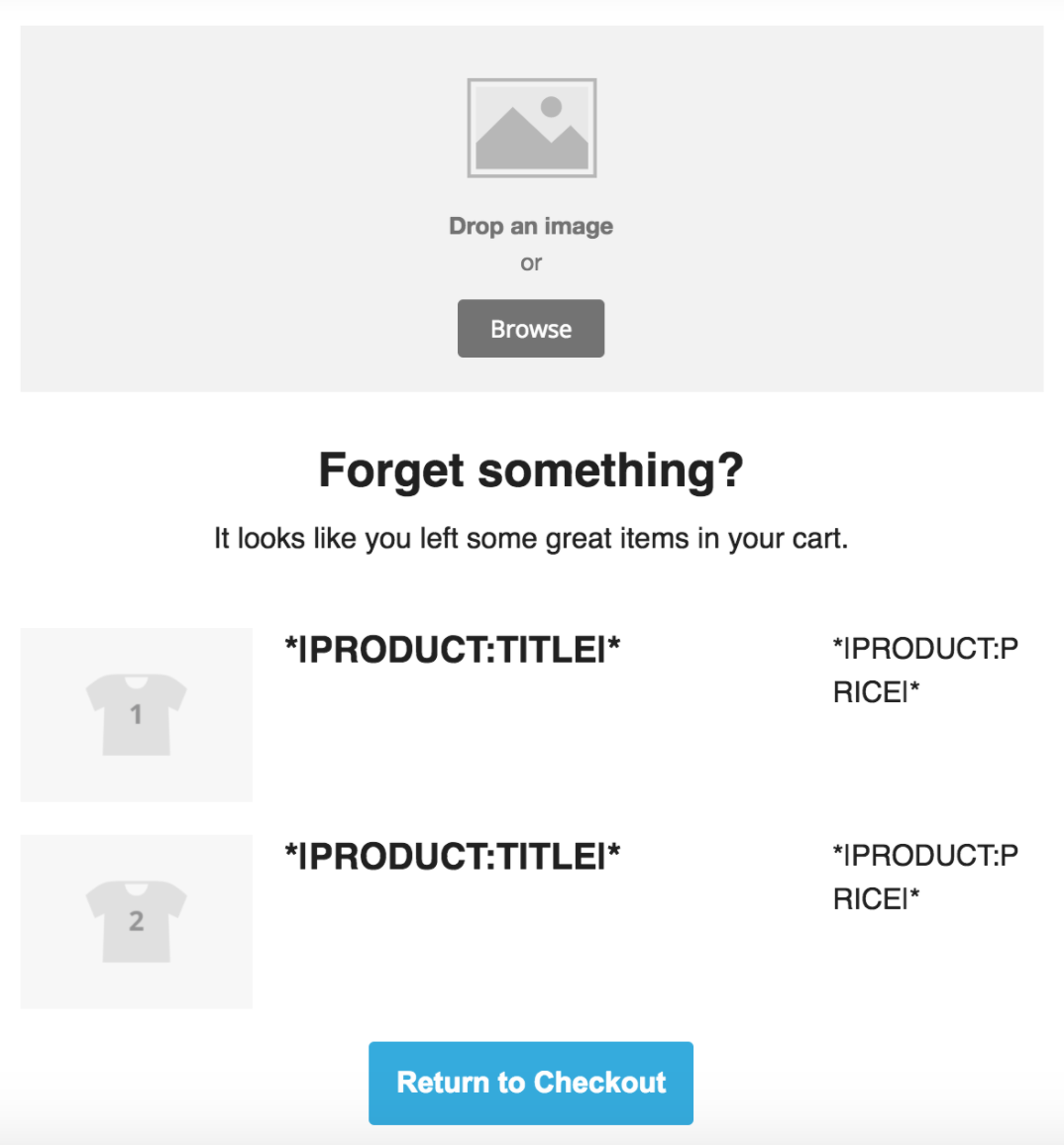
You can also customize the email information:
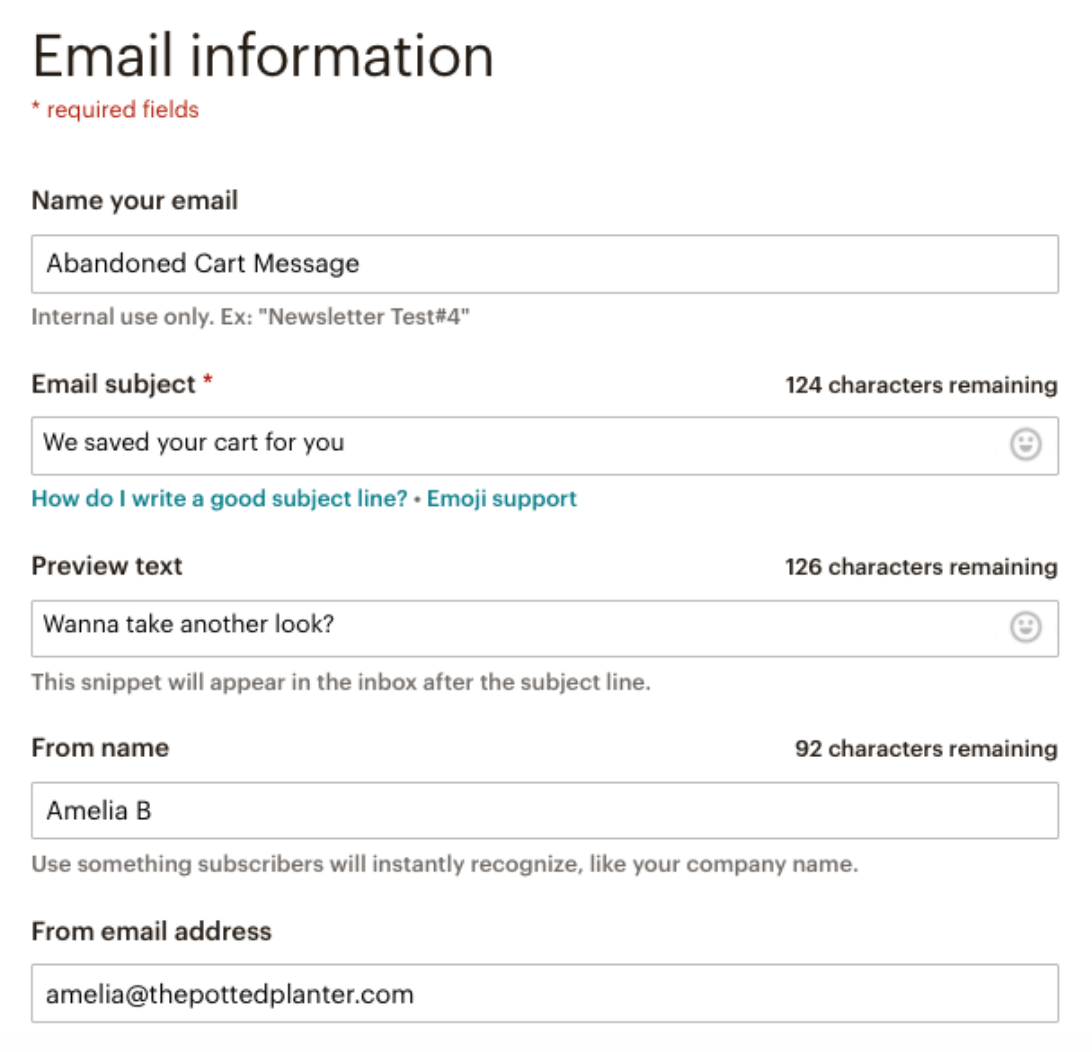
Jack Wills (email)
Subject line: Your basket is having abandonment issues… 🙁
We were hooked on this email from Jack Wills as soon as we saw the subject line. You don’t want to be the reason your shopping cart has emotional issues as they grow up, right?
They carry over that tone into the email with text like, “Don’t worry, we’ve got you,” and “We know life can be hectic.” So, they prove the subject line isn’t just a gimmick to get the shopper into the email: They stay true to that approach throughout the messaging.

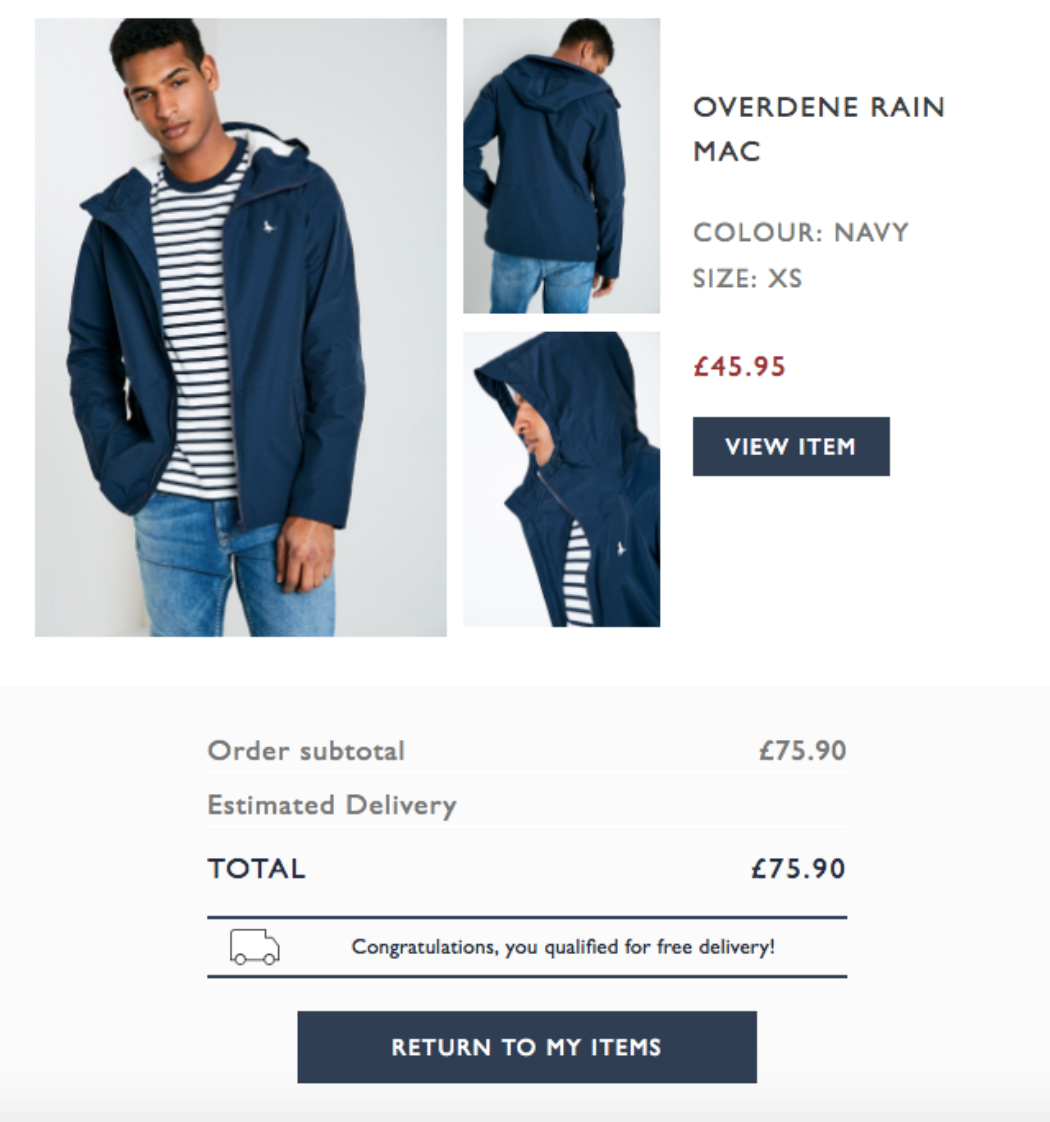
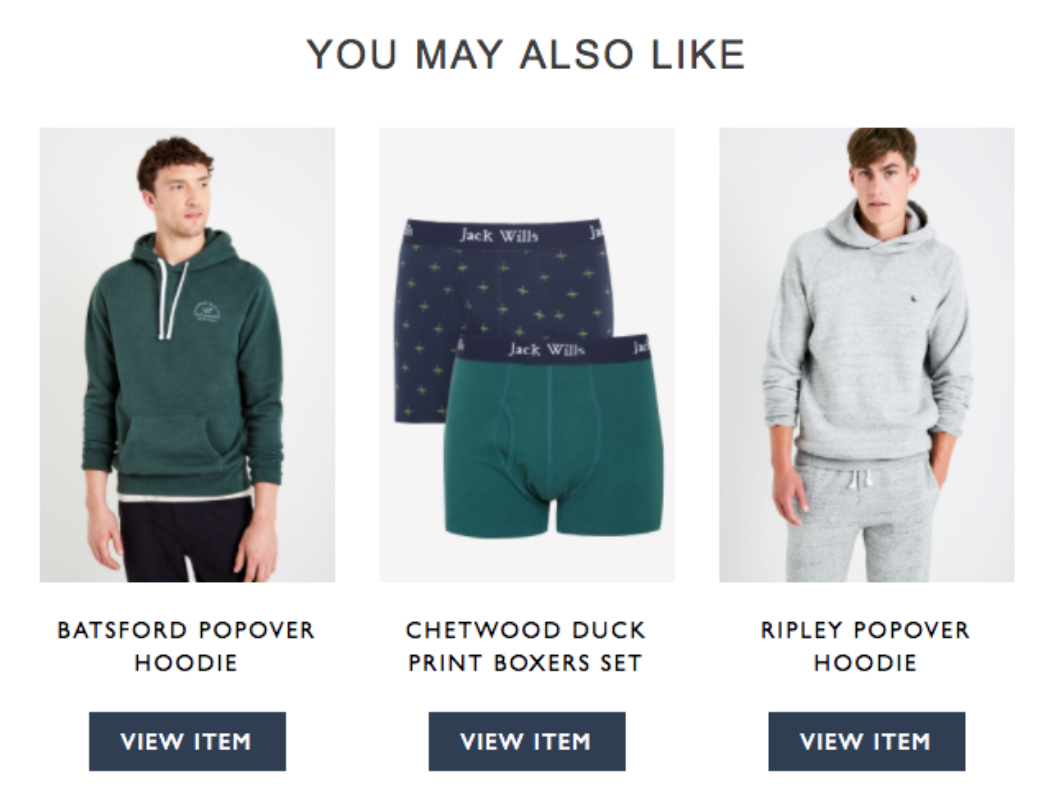
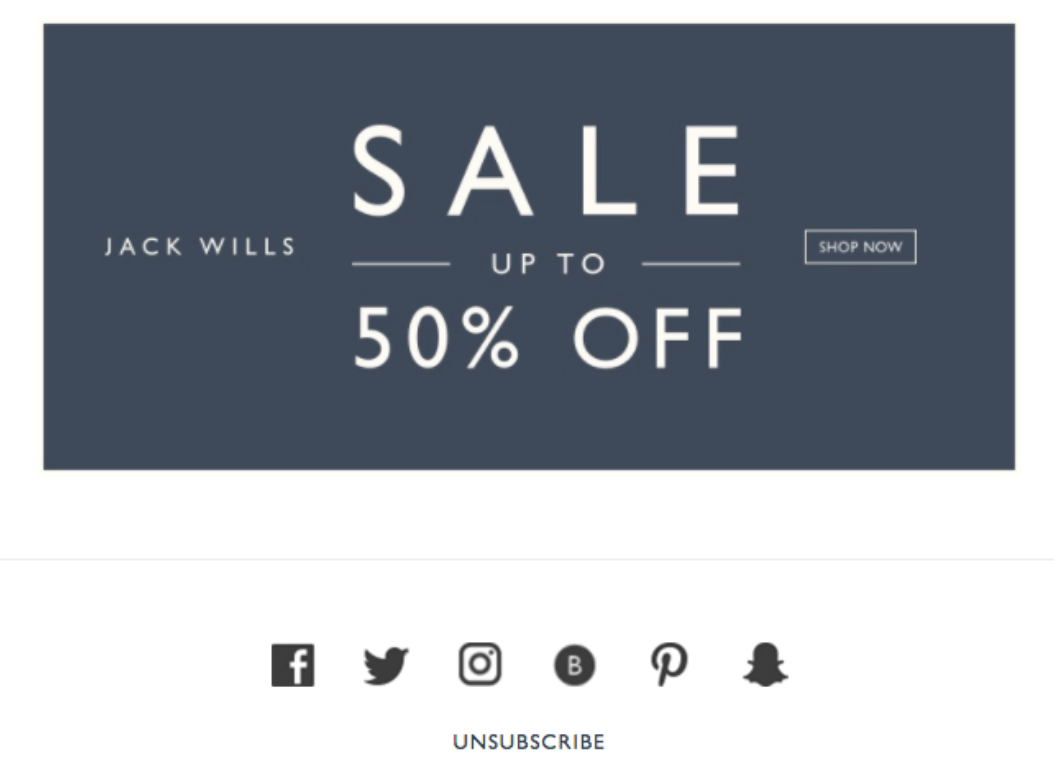
What else we like about this email:
- Though there are four main CTAs in the email body, there are only two different wordings: “Return to my items” and “View item.” So, it doesn’t seem overwhelming.
- They show different views of the product, which isn’t something you see very often in an abandoned cart email.
- In addition to the photos, there’s also the product name, color, size, and price. That pretty much covers it!
- And they take that a step further and include the order subtotal, which is a great addition when there are multiple items in their cart. They even show the estimated delivery cost, or in this case, free delivery (a major plus).
What they could have done better:
- There’s a lot going on in this email, from the products left in the cart to other related products and finally a sale that’s going on. That could become a bit much for the casual shopper, which is why it’s important to use A/B testing with your emails to see which approach works best for your specific audiences.
- While we love the approach they used with the subject line, if they wanted to make it even clearer, they could have used “cart” instead of “basket.”
Are abandoned cart emails compliant?
Abandoned cart emails allow you to provide a targeted, personalized campaign to already engaged online shoppers. Anytime you can do all of those things, you have a winning recipe for ROI.
One question many people ask, though, is if these emails are too good to be true. In other words, are they compliant? To answer that question, we’ll ask you one:
- Did you know you can send emails to people in the United States, even if they haven’t opted-in to your list?
The CAN-SPAM Act for the United States doesn’t require that a subscriber opt-in to your list, just that they can opt-out to any email you send. That’s why Retention.com can collect anonymous traffic off of your website and send you their contact information so that you can target them with emails. Just remember: This approach only works in the United States and isn’t GDPR compliant, which does require you to have explicit consent to email EU consumers.
To take that a step further, Retention.com is also Spamhaus compliant because, in part, we provide verifiable consent (the source record and opt-in date) of every email we pass along to our users. Those source websites’ privacy policies state that by opting in, the subscriber is agreeing that their information will be shared with a partner network for marketing purposes.
Start creating your abandoned cart templates
Now that you have a firm grasp on what does and doesn’t work with abandoned cart emails, it’s time to start creating some of your own and adding them to your automation series. Add your brand’s personal touch to the templates so your subscribers know exactly who it’s from, and test different versions until you find the winning combination. And if you want to start collecting engaged, anonymous traffic you don’t already have off of your site, we can help!
Getting customers to visit your site and place items in their cart is only half the battle. According to Baymard Institute, cart abandonment rates average around 70% on most e-commerce sites. Re-engaging even a fraction of these customers can drastically increase a business's revenue. Luckily, there are numerous straightforward ways shopping sites can reclaim abandoned cart revenue.
How to reclaim abandoned cart revenue
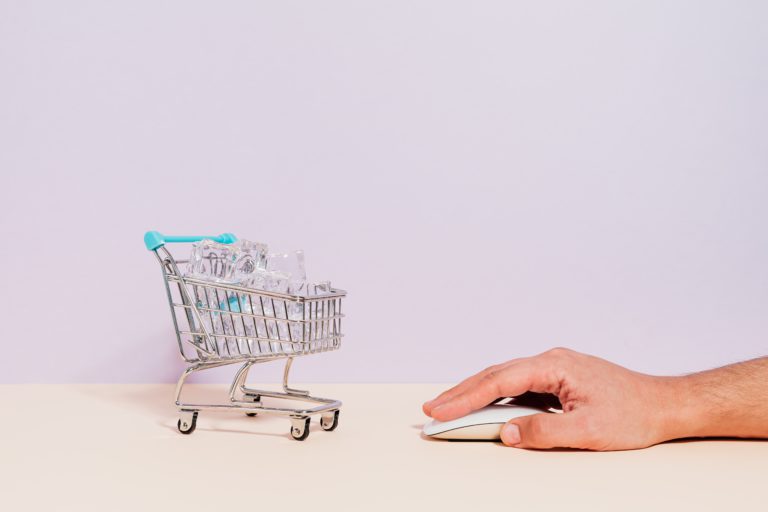
Personalized abandoned cart emails
Abandoned cart emails are nothing new; you’ve likely received these emails from Amazon and other e-commerce sites you frequent. However, many abandoned cart emails feel more like advertisements than personalized messages.
Personalized abandoned cart emails drastically improve revenue potential, especially those acknowledging your customers’ shopping habits. For example, triggered emails that recognize first-time shoppers may read differently than those sent to long-time customers. Emails sent to new buyers can offer introductory gifts or how-to guides, whereas those sent to long-time customers may provide benefits for their loyalty.
Engage anonymous cart abandoners
Reclaiming abandoned cart revenue gets trickier when you realize how many of your customers are unidentified. In some cases, these customers aren’t on your email list. In other cases, they’re on your email list but aren’t logged in.
Sending emails to unidentified customers can be challenging. Luckily, Retention.com’s CartID+ tool can use cookies to reach out to otherwise anonymous customers. CartID+ can even send abandoned cart emails to customers who haven’t opted into your newsletter.
SMS notifications
Emails aren’t the only way to get a customer’s attention; text messages can be a more engaging medium for retention marketing. Some sign up for website mailing lists using emails they’ve created to collect spam mail. Although abandoned cart emails aren’t spam, some of your contact attempts won’t be seen if you only use emails to engage cart abandoners.
SMS notifications can’t be flagged as spam and are more likely to be seen than emails. Additionally, some studies suggest mobile customers are more likely to abandon their carts than desktop users. Text messages are an ideal way to communicate with your mobile site users.
Learn more about your customers
Personalizing communication is an exercise in futility if you know nothing about your customers. Apps like Retention.com’s Enrich tool can provide valuable information about the people visiting your site. Learning more about your shoppers’ demographics and interests can enhance your email-campaigning efforts.
Knowing whether a customer has a kid, a pet, or a specific hobby will improve your site’s product recommendations. The Enrich tool, combined with your abandoned cart information, is vital to building a customer profile to enhance your triggered emails.
Offer discounts and alert customers when sales are live
Sometimes, people abandon their carts because they decide an item’s price is too high. Offering a discount can be an excellent way to reclaim abandoned cart revenue. As a matter of fact, some customers abandon their cart specifically because they think they’ll receive a discount.
Popular sites like LifeHacker teach customers to use cart abandonment as a method for buying products at a lower price. It isn’t uncommon for a customer to place a product in multiple carts across multiple sites and buy it from the one that sends them a coupon. Still, you don’t have to cut into your profits to engage customers.
Sites like Amazon observe products that customers leave in their carts and send them emails when they go on sale. This method lets you re-engage cart abandoners while making the most of your planned discount events.
Create a guest checkout page
Many customers abandon carts because they don’t want to waste time creating an account. Customer accounts are ideal for collecting emails, phone numbers, and addresses for future engagement campaigns. Still, customers who can’t buy your products without creating an account may choose to shop elsewhere. Guest checkout pages are a simple way to make it easier for customers to shop on your site.
Display shipping options on the product page
Some customers abandon their carts because the shipping costs catch them off guard. Some sales methodologies suggest obscuring a product’s price by hiding shipping costs until the customer is ready to check out. However, the modern consumer has grown tired of dishonest sales practices.
Although you may not be able to reduce shipping costs, being upfront about them can reduce your abandoned cart rates.
Stick with what works
There’s no such thing as a one-size-fits-all approach in retention marketing. You shouldn’t spend time on campaigns that you run blindly. Monitoring your engagement campaigns and investing more time and effort into the methods yielding the best results is essential.
If you’re considering an application or service to help you with customer retention, you should ensure it offers in-depth reporting. Retention.com tracks revenue and ROI weekly and monthly, making it easy to access your needed data. Additionally, Retention.com has valuable insights into the domains, landing pages, and times of day that generate the most emails.
What Is customer retention?

Customer retention refers to the number of people who make repeat purchases from a business. Growth hackers will tell you that by increasing customer retention rates, you can often increase your revenue faster.
The thing is, customer retention can be difficult for e-commerce businesses because there are so many alternatives available for consumers. However, a retention marketing plan can help you improve customer retention and increase your bottom line.
Without retention marketing, you're constantly prospecting for potential customers rather than focusing on building a loyal customer base. The truth is you need to do both, but many e-commerce businesses focus on the new consumer.
Here we discuss retention marketing and industry technology and offer five solutions to keep customers coming back.
What Is Retention Marketing?
Retention marketing focuses on engaging returning customers rather than targeting new ones. The goal is to increase customer loyalty by consistently giving them added value and more opportunities to purchase your products.
McKinsey Insights reports in 2022, more US consumers switched brands and retailers, looking for value. What's more, a little over a third of consumers opted to buy from private labels.
While your business needs new and returning customers, retention marketing will increase customers' lifetime value and long-term profitability.
Retention Marketing Tools
Retention marketing is about communication with your customers and using available technology to leverage data for actionable insights. Technology is a driver in retention marketing.
It leverages strategies to keep customers engaged and loyal to your brand based on relevant data. Real-time reporting tools provide deep insights into:
- Contacts
- Revenue
- ROI
- Trends
- Usage
Additionally, an integrated dashboard enables businesses to connect seamlessly to top email marketing applications, such as SalesForce and Marketo. Using technology to leverage insights and act on them is the foundation of customer retention.
5 Ways to Improve Customer Retention
If you want loyal customers, focus on building long-term relationships and delivering value throughout the customer journey.
1. Provide Friendly and Efficient Customer Support
Loyal customers spend more and will likely refer their friends and family to your brand. Reliable customer support is vital to building brand trust.
Today, customers expect to be able to reach customer support 24/7. Automation makes it possible to be there at all hours, and you can follow up if needed.
Provide customer service with easy access and accurate responses to solve customer issues. Listen and collect customer feedback. Then use it to improve customer experiences.
Nurturing customer relationships by providing ongoing service and support helps build lasting customer relationships that drive revenue.
2. Make it Personal
When your customers give social endorsements, it increases customer retention. Encourage current customers to share their thoughts on your product or service, or implement a refer-a-friend campaign encouraging customers to endorse your brand.
Communities increase customer retention. Share your vision, and talk about topics your customers are interested in that naturally relate to your products or services.
Retention marketing is all about knowing your customers. To that end, you can leverage customer data to understand their preferences and motivations. Customers will come back to make purchases if they're getting value from your brand.
Use the data to build buyer personas that represent the type of person who uses your product or service. Then create campaigns that add value for them.
3. Offer Loyalty Programs and Discounts
Loyalty programs reward your customers for buying your products and services. It can be anything from surprise swag to exclusive access that only loyal customers can purchase.
Loyalty programs and discounts show your repeat customers that you appreciate their business. Similarly, referral programs reward your customers when they send friends and family to your business.
E-commerce loyalty programs help brands build community and generate data to gain personalization insights. Consider implementing VIP benefits to increase customer lifetime value.
Social media contests encourage brand loyalty, build trust, and are a low-cost way to engage customers.
4. Dedicate More Attention to Email Campaigns
Email is an opt-in channel. Once they sign up, you can use customer emails to follow up, offer discounts, and find upsell opportunities.
To that end, it's essential to dedicate more attention to email campaigns to increase customer retention.
Email represents 50% of Latico Leathers' total revenue, and they wanted to dramatically increase their email list, drive a positive ROI, and maintain or increase their sending reputation. The company integrated Resolve with Klaviyo and experienced a 45% open rate from Resolve contacts.
You can customize email marketing campaigns and messaging for your audience. Analytics reveal which emails your customers open and don't open.
The data allows you to refine your email campaigns to suit your customers' preferences. Retention emails help build your email list, and you can segment it according to the most engaged to the least active recipients.
5. Re-engage Abandonment Revenue
First, use data analytics to measure your cart abandonment rate. If it's high, revisit your email marketing campaigns to determine why they don't resonate with your audience.
Cart abandonment could also be website related. For example, checkout may not be a user-friendly experience. Once you gather insights into why customers abandon their carts, you can set out to re-engage them.
Leverage industry-leading identity technology to increase cart abandonment revenue. For example, GetEmails enables businesses to send abandoned cart emails to users, even if they still need to opt into your newsletter.
Work With Retention Marketing Professionals
Retention.com specializes in retention marketing and e-commerce solutions, including cart abandonment and re-engaging potentially lost customers. We provide one-click integrations with leading marketing automation platforms.
Our dashboard features a user-friendly interface to easily connect to any email marketing application in under a minute. Retention's integrations automatically update and suppress contacts daily.
We can help you reclaim up to ten times more abandonment revenue by leveraging industry-leading Identity Resolution technology. When an unidentified customer abandons a cart, we identify them. Then a personalized flow automatically triggers in the messaging platform.
Scale up your abandonment flows and improve your retention marketing strategy. Get in touch with Retention.com today to find out how we can help.
7 out of 10 online shoppers abandon their carts, representing billions of dollars in lost revenue.

Imagine if you could instead reliably recoup even some of those lost sales.
Using retention marketing tactics, you can re-engage customers who have abandoned their carts and bring them back to your shop.
Read on to understand everything you need to start putting that lost revenue back in your pocket where it belongs.
What is Retention Marketing?

Retention marketing encourages customers to return to your website or store to make repeat purchases. It means focusing on the customer's experience and building brand loyalty to boost word-of-mouth advertising.
At its core, retention marketing means keeping the customers you already have and increasing their spending on future purchases.
Your business can utilize many effective retention marketing strategies, including reclaiming abandoned cart revenue.
The bottom line is to create engagement and loyalty in the customers you have already converted.
This loyalty also leads to reaching new customers or clients through word of mouth.
The Goal of Retention Marketing

Retention marketing aims to keep customers engaged with your company and product to increase their lifetime value to your business. The end goal of retention marketing is to increase your profits. For example, in a recent article, American Express noted that it costs 6 to 7x more to get new customers than to retain old ones.
By changing the focus to keeping customers interested and engaged with your brand, you can spend less to make more profit in a shorter time.
Why is Retention Marketing Important?
Spending less on marketing while making more sales is a dream come true. This is why retention marketing is essential to any modern business.
In addition, advertising on every platform has become much more expensive. According to Digital Information World and Business Insider, we are seeing huge increases in social media marketing costs.
For example, Facebook ads rose 89%, while advertisements on YouTube now cost 108% more than last year.
Clearly, the cost of acquiring new customers is only going up, so retention marketing is becoming even more critical.
Benefits of Retention Marketing

There are many benefits to retention marketing.
One of the most significant benefits, besides the increase in profit margins, is that it increases the lifetime value of your customers.
Happy and loyal customers will buy more, come back more often and tell others about you.
When you make efforts to engage with old customers, they reward you with increased sales. As a result, you will have to spend less on advertising.
Challenges of Retention Marketing
Understanding your customer's wants and needs deeply enough that you can keep them happy and engaged takes some work.
Likewise, setting up the required metrics to accurately measure your campaigns' results can take time.
Making sure your customers have a positive experience with your brand takes time and effort.
Customer service can be expensive and hard to get right if customers have unrealistic expectations.
It can also be challenging to show customers over time that they are still appreciated.
Retention Marketing vs. Acquisition Marketing: What's the Difference?
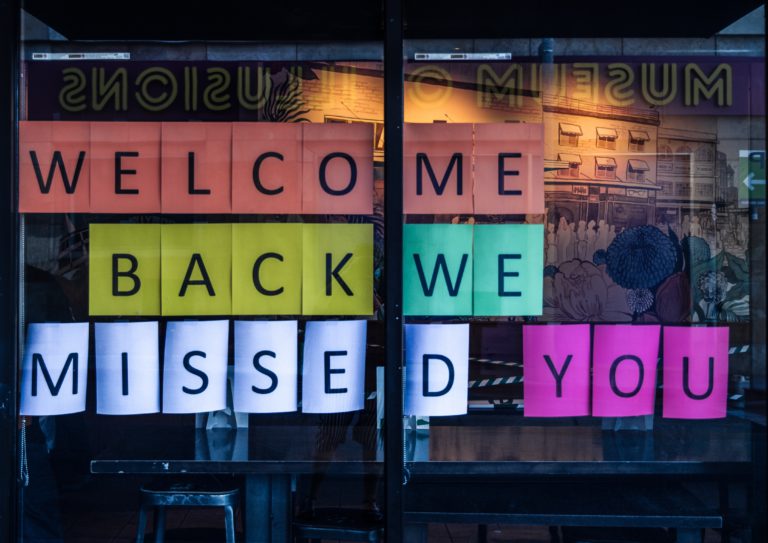
Retention marketing and acquisition marketing are two very different types of marketing. They have different goals and employ different tactics.
Acquisition marketing is more direct and easier to measure.
In contrast, retention marketing is often concerned with subjects such as loyalty, which is more of an indirect result of many combined efforts.
Main Differences Between Retention and Acquisition Marketing
The most significant difference between these tactics is the type of customer they focus on.
Retention marketing focuses on customers you already have, while acquisition marketing focuses on getting new customers.
The actions taken in Retention marketing campaigns ensure that customers continue purchasing products in the long term.
Retention marketing tactics build loyalty and connection with your customers.
In contrast, acquisition marketing strategies focus on advertising to gain new customers.
How Should You Divide Your Marketing Spend Between Retention and Acquisition
Deciding how to divide your marketing budget between retention and acquisition depends on your current customer profile.
Brandalyzer does a great job of breaking down the mathematics of this complicated formula.
However, you can't go too far wrong if you spend 75% of your marketing budget on retention.
However much you decide to spend, it is clear that focusing more on retention than on acquisition will lead to greater success for your business.
Forbes recently conducted a study, and one of the notable findings was that merchants that spent more on retention in the last 1-3 years had close to a 200% more likelihood of being successful than their counterparts who spent more on acquisition.
Types of Retention Marketing
There are many types of retention marketing, and you can choose the tactics that resonate most with your business.
For example, an online coaching portal could send personalized messages to encourage clients through SMS messaging.
Here are some other types of retention marketing campaigns:
- Reactivation: Scooping up those customers who already showed interest and giving them a great experience with your brand is one of the best retention marketing tactics available.
- Simple Returns Policy: This makes people more likely to buy if their fear of being unable to make a return easily is removed with a simple, easy-to-find policy.
- Referral: Word of mouth is the least expensive and most profitable way to get new clients.
- SMS Marketing: The most personalized way to connect with your potential clients.
- Onboarding: Usually one of the first places to focus on.
- Subscriptions: This is the best way to automate repeat purchases.
- Content: Creating content around a great cause can help build loyalty with your customers when they see your values align with their own.
- Loyalty and Rewards: This is often the best way to get your audience to buy more frequently.
- Community: Building a community of people who share values and creating a sense of belonging with your customers will keep them loyal for a lifetime.
What Are the Most Effective Retention Marketing Tactics?
Retention marketing tactics don't have to be expensive. However, the most effective strategies are thoughtful to engage repeat customers.
Email marketing to recapture abandoned cart revenue is one of the most profitable and effective strategies.
According to the Harvard Business Review, It is best to concentrate on the initial experiences a customer has with you in your retention marketing efforts.
Focusing on the first purchase experience statistically brings the most ROI and should be taken care of first in a retention marketing campaign.
Personalization as an Effective Retention Marketing Campaign
Personalization can be used to enhance any of the other highly effective tactics mentioned above. You can employ personalization as a tactic through the many stages of the customer's journey.
Personalization as a retention marketing strategy has been shown to increase the number of customers a business gains and their lifetime value to you.
This personalization tactic provides valuable content across channels like email, social media, or even (SMS) text messages!
Which Retention Marketing Tactics are Right for Your Business?
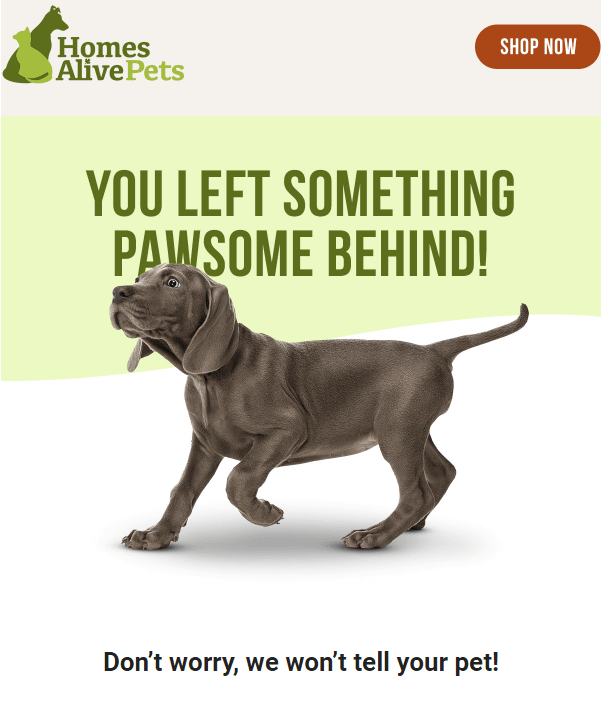
Finding the right tactics for your business can depend on your niche. Make data-driven decisions to decide on the best customer retention strategy.
First, find the right tools and formulas and measure your customer's data.
Then find out what successful metrics are for your business.
Looking at what successful metrics are for your industry is an effective way to begin. Then measure your customer data.
With the data in hand, you can see where you fall short. This will empower you to create the best retention marketing tactics for your business.
How to Create an Effective Retention Marketing Strategy
Decide what tactics will bring you the most profit and quickest returns. Target these first to create an effective retention marketing strategy.
Using the right tools is integral to creating an effective retention strategy. They will help you determine your goals and inform your strategy.
For example, if you recognize that you have a lot of dead emails on your list and want to bring these lost customers back, you can utilize Retention.Com's Reactivate campaign. This can help you increase your email opening rate from 2-3% all the way up to 40%.
What Tools Should be Implemented?
Having Customer Retention Management tools and identity resolution software can make all the data about your customer base easily accessible.
Another way to increase customer satisfaction while gathering data about them is to install a chatbot on your website.
When you have the information you need about your customers, it is much easier to tailor content for them.
Steps to Creating Your Retention Marketing Strategy
To create an effective retention marketing strategy, we recommend the following steps:
- Determine your churn rate.
- Make a User Journey Map.
- Focus on the first purchase experience and onboarding to begin.
- Use behavior analysis tools.
- Create personalized customer communications using data.
- Implement an easy way to collect feedback from your customers.
It is a great idea to concentrate first on the projects that will give you the most significant return and then go to the less profitable but still rewarding projects. For example, focus on the first purchase.
How to Measure the Success of Your Retention Marketing Efforts
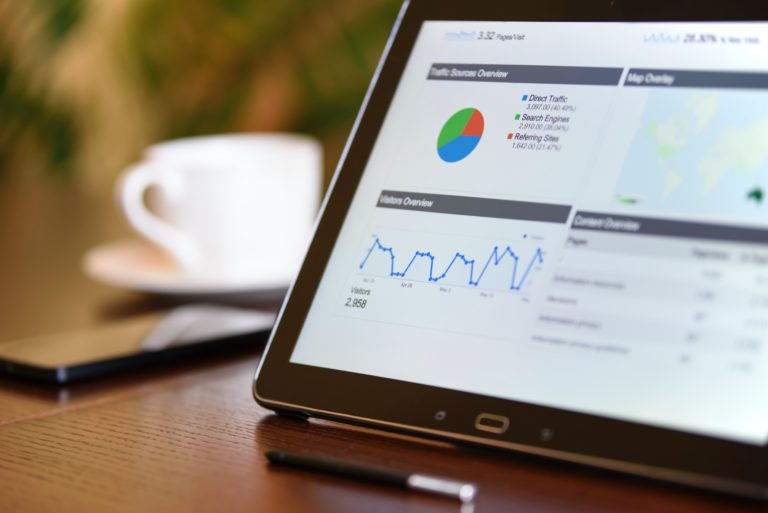
Measuring the success of your marketing efforts with cutting-edge tools that give you accurate data will bring you the most accurate results.
Use mathematical formulas that allow you to accurately pinpoint your statistics.
You can find many of these on the Appcues Blog, where they explain the different statistics you can measure along with the formulas.
For example, churn rate = (number of customers at the end of the year - new customers)/number of customers at the beginning of the year.
Here are some of the ways you can measure your success with your retention marketing efforts:
- Churn rate - monthly, quarterly, or yearly
- Average session duration
- Active users-weekly, monthly, daily
- Monthly recurring revenue and revenue churn rate
- Engagement Rate
- Reactivation rate
- Customer lifetime value
- Cumulative revenue
- Customer Satisfaction rate
- Net promoter score
- Renewal rate- for subscription services
Why are Success Measurements Important?
Peter Drucker, the first thought leader in business management, famously said, "If you can't measure it, you can't improve it."
To guide your strategy, measure which tactics work best with your customers. This way, you can direct your budget to the most effective campaigns.
The Best Success Measurements for Retention Marketing
In retention marketing, some of the most profitable success measures are product return rate, ROI, revenue and customer churn, customer lifetime value, repeat purchase ratio, and time between purchases.
It is best to find the measures that mean success for your niche. For example, in some niches, buying only one or two products in a lifetime is common.
Comparing the repeat purchase ratio for that business to the ratio desirable for most stores would create unrealistic expectations.
Finding out what metrics are considered successful for your niche is worthwhile.
Tools to Measure the Results of Your Campaign
Every website needs tools that measure your marketing data. These tools will let you know the ROI of your retention efforts.
Some of the essential tools are Google Analytics and Retention.com.
Combining these two tools will give you the information you need to gather the statistics to measure your retention marketing efforts.
For example, with Retention.Com, you can measure and keep track of your cart abandonment rate and the abandoned cart recovery rate.
On your Retention.com dashboard, you get real-time reporting. For example, you can easily see your revenue and ROI tracking and how many people have added to the cart, all in one place.
Re-engage with Your Customers and Reclaim Abandoned Cart Revenue
Now that you know how to start measuring your data and how you can utilize retention marketing to 5- 10x your current profit margins, nothing can stop you!
If you're still unsure how to re-engage with your customers and reclaim those abandoned carts, then book a demo with Retention.com. We can show you how easy it is.

In this article, we'll cover why email automation is important for your Shopify and Shopify+ business, especially when it comes to cart abandonment, and we'll walk you through how to do it on one of the most popular automation platforms out there - Klaviyo.
So let's get started!
What's the problem?
Have you ever been shopping online, added an item to your cart, and then left the site without completing the purchase? We've all been there. Life gets in the way, or we get distracted, and before we know it we've abandoned our cart and moved on with our day.
Sometimes we don’t even get to the point of dropping something in the cart. We browse generally, dive deep into a specific category of products, or simply spend time pondering the purchase of just one product.
As an eCommerce business owner, it's important to have email automation in place to recapture shoppers who have abandoned without purchasing. It’s core to any retention marketing plan.
Statistics show that over 70% of people who add items to their online shopping carts abandon them before completing the purchase. That's a lot of potential sales that are being lost! Not to mention the other folks who spent time browsing then disappeared. They’re probably just as interested!
With email automation, you can send a series of emails to shoppers who have abandoned their carts, abandoned their browse, abandoned a category, or abandoned a product, reminding them of the items they were interested in and giving them a special offer or incentive to complete their purchase. Email automation is a highly effective way to increase sales and revenue for your eCommerce business.
Email automation can seem daunting if you've never set it up before, but there are many software platforms out there that make it easy to get started. In this blog post, we'll give you a step-by-step guide on how to set up email automation for your eCommerce business using the popular platform Klaviyo.
Why Email Automation is Important for your Shopify or Shopify+ Businesses
Email automation is important for Shopify businesses because it helps increase sales and revenue by recapturing shoppers who have abandoned their carts. By sending a series of targeted emails reminding shoppers of the items they were interested in and providing them with a special offer or incentive, you can encourage them to complete their purchase.
According to statistics, over 70% of people who add items to their online shopping carts abandon them before completing the purchase. That's a lot of potential sales that are being left on the table! With email automation in place, you can recover some of those lost sales and boost your revenue.
Email automation can also help you create more personalized experiences for your customers and build relationships with them over time. By segmenting your email list and sending targeted emails based on shopper behavior, you can create more relevant and engaging experiences that will make customers want to do business with you again and again.
How to Set Up Email Automation using Klaviyo
Klaviyo is one of the most popular platforms for setting up email automation flows for eCommerce businesses. Klaviyo integrates with Shopify, WooCommerce, BigCommerce, Magento, and custom stores built on other platforms like ReactJS. In addition, Klaviyo offers a wide range of features and customizable options to fit the needs of any business size or type.
Follow these steps to set up your first email flow in Klaviyo:
- Log into your Klaviyo account (or create an account if you don't have one already).
- Click on "Flows" in the left sidebar menu and then click "Create Flow."
- Give your flow a name (for example: "Abandoned Cart Flow") and select "Build from Scratch."
- In the next step, select "Abandoned Cart" as your trigger event type."
- Choose when you want this flow to trigger (for example: "1 hour after an item is added to cart").
- In the next step select "Email" as your desired action type."
- Select which template you want to use for this email (you can choose from pre-built templates or create a custom template).
- Enter the subject line for your email and design your email content (you can use HTML or plain text).
- In the final step, click "Activate Flow."
Now that your flow is set up, Klaviyo will automatically send out emails according to the schedule and trigger events that you specified. You can always go back into your flow at any time and make changes if needed.
You also need a strategy for these emails
Fortunately, we have a trove of resources to help you out at every turn. Check out these articles for deep dives on the following topics:
You should find everything you need in those links to build a robust marketing program around abandonment flows.
There’s still one question in your head, though… how do I even identify who these abandoners are, if they haven’t signed up or purchased something from me in the past?
Grow Your First-Party Dataset, and Unlock A Whole New Segment of Interested Customers
Retention.com specializes in retention marketing and e-commerce solutions, including cart abandonment and re-engaging potentially lost customers. We provide one-click integrations with leading marketing automation platforms.
Our dashboard features a user-friendly interface to easily connect to any email marketing application in under a minute. Retention’s integrations automatically update and suppress contacts daily.
We can help you reclaim up to ten times more abandonment revenue by leveraging industry-leading Identity Resolution technology. When an unidentified customer abandons a cart, we identify them. Then a personalized flow automatically triggers in the messaging platform.
Scale up your abandonment flows and improve your retention marketing strategy. Get in touch with Retention.com today to find out how we can help.
Conclusion
Email automation is key for any eCommerce business that wants to boost sales and revenue. By sending targeted emails reminding shoppers of items they were interested in and providing them with an incentive to complete their purchase, businesses can increase their conversion rate and recapture lost sales.

If you're an e-commerce business owner, then you know that one of the most frustrating things is when a shopper puts items in their cart but doesn't complete the purchase. It's called cart abandonment, and it's something that all businesses deal with.
But there's no need to despair! There are ways to combat cart abandonment and turn those shoppers into paying customers. And one of the best ways is by using cart abandonment emails.
So let's get started!
Your Cart Abandonment Email Strategy
There are a few things to keep in mind when crafting your cart abandonment email strategy.
Don't Wait Too Long
First, you need to make sure that your emails are timely. You don't want to wait too long to send the email after the shopper has abandoned their cart, or else they may have forgotten about you altogether.
The general rule of thumb is to send the first email within 24 hours of abandonment. This will give you the best chance of conversion because the shopper will still remember their interaction with your store.
Of course, you will need to set up the right flows in your marketing automation software. We’ve got the goods on how to do that.
Keep it Relevant
Your next step is to make sure that your emails are relevant. This means tailoring the content of the email to match what was in the abandoned cart.
For example, if a shopper abandonment their cart because they couldn't find what they were looking for, then your email should focus on helping them find what they need.
Or if a shopper abandons their cart because they were not ready to commit to a purchase, then your email should focus on giving them a discount or special offer that will persuade them to buy from you.
The key here is relevance; if your email does not address the reason why the shopper abandons their cart, then it is unlikely to convert them into a paying customer.
There’s a lot more to this, so if you want a bit of a deeper dive, check out our guide to abandoned cart email strategy. We’ve also collected a ton of great examples of abandoned cart emails and a set of can’t-miss best practices.
Make the Sale
The last step is to make sure that your emails are persuasive. This means convincing the shopper that completing their purchase with you is the best option. To do this, you'll want to highlight why shopping with you is better than shopping with any of your competitors.
For example, you could mention free shipping or returns, exclusive discounts or offers, or superior customer service. Whatever it is that sets you apart from your competitors, make sure to include it in your email so that shoppers know exactly why they should buy from you instead of anyone else.
For more detail, read about some of the best methods for reclaiming abandoned cart revenue.
“But wait,” you’re asking yourself… “how do I even identify who these cart-abandoners are so I can email them?”
Great question…
Grow Your First-Party Dataset, and Unlock A Whole New Segment of Interested Customers
Retention.com specializes in retention marketing and e-commerce solutions, including cart abandonment and re-engaging potentially lost customers. We provide one-click integrations with leading marketing automation platforms.
Our dashboard features a user-friendly interface to easily connect to any email marketing application in under a minute. Retention’s integrations automatically update and suppress contacts daily.
We can help you reclaim up to ten times more abandonment revenue by leveraging industry-leading Identity Resolution technology. When an unidentified customer abandons a cart, we identify them. Then a personalized flow automatically triggers in the messaging platform.
Scale up your abandonment flows and improve your retention marketing strategy. Get in touch with Retention.com today to find out how we can help.
Conclusion
If you're an e-commerce business owner, then chances are you've dealt with cart abandonment at some point or another. But there's no need to despair! There are ways to combat cart abandonment and turn those shoppers into paying customers. And one of the best ways is by using cart abandonment emails. Just remember to keep your emails timely, relevant, and persuasive, and you'll be well on your way to recovering lost sales and converting shoppers into loyal customers.
Nothing is more powerful for an e-commerce brand than email automation flows. And that includes the four critical abandonment flows. They sit right at the core of any good retention marketing strategy.
From welcome emails to ongoing drip marketing campaigns to re-engagement, you want to make sure you have a robust plan to stay top of mind, without, of course, turning anyone off.
But there’s a big gap that many brands miss when rounding out their marketing strategy, and that’s abandonment flows. Today we’re going to get into the fundamental abandonment flows, and why you should have automation for each of these flows.
What are the four critical abandonment flows?

It stings when someone is so close to buying your products or services, but then for whatever reason, they never click “Purchase.” Or maybe they don’t even add an item to their cart. But they sure did think about it. Luckily, there are ways to not only capture this whole segment of window shoppers and reach out to them.
In this post, we’ll cover some of the key abandonment flows you should be thinking about and adding to your automation strategy. These abandonments include:
- Cart Abandonment
- Browse Abandonment
- Category Abandonment
- Product Abandonment
E-commerce businesses on Shopify and Shopify+ face cart, browse, category, and product abandonment every day.
Capturing shoppers who fall into these categories is important because it can lead to more sales and a better bottom line for your business.
Email marketing automation flows are an effective way to capture these shoppers and turn them into customers.
When cart, browse, category, or product abandonment occurs, an email marketing automation flow can be triggered to send a message to the shopper.
This message can include a discount code or other incentive to encourage the shopper to come back and complete their purchase.
Email marketing automation flows are easy to set up and can be a great way to boost sales and improve your bottom line.
If you haven't already, consider setting up email marketing automation flows for cart, browse, category, and product abandonment. It could be the key to increasing sales and improving your business.
Let's dig into these different types of abandonment, and why they matter.
Cart abandonment
Cart abandonment is when a shopper adds items to their cart but does not complete the purchase. This can happen for a number of reasons, such as the shopper getting distracted or finding a better deal elsewhere.
Cart abandonment is a big problem for e-commerce businesses because it can lead to lost sales and revenue.
According to Baymard Institute, the average cart abandonment rate is 69.23%. That means that for every 100 people who add items to their cart, 69 will abandon their cart without completing the purchase.
This is a significant amount of lost sales and revenue for businesses, which is why capturing these shoppers is so important.
Browse abandonment
Browse abandonment is when a shopper views products on your site but does not add anything to their cart. This can happen for a number of reasons, such as the shopper not finding what they are looking for or getting distracted.
Browse abandonment is a big problem for e-commerce businesses because it can lead to lost sales and revenue.
According to Barilliance, the average browse abandonment rate is 87%. That means that for every 100 people who view products on your site, 87 will leave without adding anything to their cart.
This is a significant amount of lost sales and revenue for businesses, which is why capturing these shoppers is so important.
Category abandonment
Category abandonment is when a shopper views products in a certain category on your site but does not add anything to their cart. This can happen for a number of reasons, such as the shopper not finding what they are looking for or getting distracted.
Category abandonment is a big problem for e-commerce businesses because it can lead to lost sales and revenue.
According to SalesCycle, the average category abandonment rate is 81%. That means that for every 100 people who view products in a certain category on your site, 81 will leave without adding anything to their cart.
This is a significant amount of lost sales and revenue for businesses, which is why capturing these shoppers is so important.
Product abandonment
Product abandonment is when a shopper views a product on your site but does not add it to their cart. This can happen for a number of reasons, such as the shopper not being interested in the product or getting distracted.
Product abandonment is a big problem for e-commerce businesses because it can lead to lost sales and revenue.
According to Invesp, the average product abandonment rate is 95%. That means that for every 100 people who view a product on your site, 95 will leave without adding it to their cart.
This is a significant amount of lost sales and revenue for businesses, which is why capturing these shoppers is so important.
What should you do about it
What marketing automation tools can Shopify and Shopify+ eCommerce brands use to create email flows for cart, browse, category and product abandonment?
There are a number of marketing automation tools that you can use to create email flows for cart, browse, category and product abandonment. Some of these tools include:
- Klaviyo
- Drip
- Hubspot
- Infusionsoft
- Marketo
Each of these tools has its own unique features and capabilities, so be sure to research each one to find the best fit for your business.
You also need a strategy
Fortunately we have a trove of resources to help you out at every turn. Check out these articles for deep dives on the following topics:
You should find everything you need in those links to build a robust marketing program around abandonment flows.
There’s still one question in your head, though… how do I even identify who these abandoners are, if they haven’t signed up or purchased something from me in the past?
Grow Your First-Party Dataset, and Unlock A Whole New Segment of Interested Customers
Retention.com specializes in retention marketing and e-commerce solutions, including cart abandonment and re-engaging potentially lost customers. We provide one-click integrations with leading marketing automation platforms.
Our dashboard features a user-friendly interface to easily connect to any email marketing application in under a minute. Retention’s integrations automatically update and suppress contacts daily.
We can help you reclaim up to ten times more abandonment revenue by leveraging industry-leading Identity Resolution technology. When an unidentified customer abandons a cart, we identify them. Then a personalized flow automatically triggers in the messaging platform.
Scale up your abandonment flows and improve your retention marketing strategy. Get in touch with Retention.com today to find out how we can help.
Conclusion
If you haven't already, consider setting up email marketing automation flows for cart, browse, category, and product abandonment. It could be the key to increasing sales and improving your business. And make sure you're capturing everyone who shows interest in your products.

Abandoned carts can be the bain of a Shopify eCommerce brand’s existence. Imagine being a brick-and-mortar store and having people walk in, fill up carts, and then simply walk out, leaving a jumble of filled shopping carts near the front door.
It happens in the outside world too, but it's epidemic online. And these abandoned carts represent billions in lost revenue. That’s why every Shopify and Shopify+ brand should have a strong abandoned cart plan as part of their overall retention marketing strategy.
This article will look at some of the top reasons that shoppers abandon their carts, and what you can do to not only minimize abandonment but also to get some of those shoppers back in to make the purchase.
Top Reasons That Shoppers Abandon Carts
Why, oh why, do they do it?
Lack of urgency
Shoppers don't feel a sense of urgency to complete their purchase when they're just browsing an online store. They can always come back later and buy the item, so there's no need to act now.Second-guessing the purchase
Second-guessing the purchase
Will this item really be worth it? Is it the best quality? Do I really need it? shoppers may have doubts about an item before finalizing their purchase.
Distractions
Online shoppers can get easily distracted by other tabs, notifications, or emails. Once they click away from your website, they may not come back.
Complicated checkout process
If the checkout process is too complicated or takes too long, shoppers get frustrated. This one happens plenty in the physical world as well.
What Can Shopify Brands Do to Prevent Abandoned Carts?
Obviously, it’s hard to control for some of the reasons above. You can’t keep a shopper from getting distracted by an email or call, can you? So you focus on what you can control. Oh and don’t worry, we’ll show get to how you win back those distracted shoppers later.
What Can You Control?
Let's focus on #4 above - a complicated checkout process. What are some of the main reasons consumers find checkout processes too complicated?
Too many steps:
Online shoppers want to be able to check out quickly and easily. If there are too many steps involved in the process, they will likely abandon their cart.
How can e-commerce brands avoid having too many steps in their checkout process?
- Use a one-click checkout option for returning customers
- Offer a guest checkout option
- Use auto-fill forms to reduce the amount of data entry required
Required account creation:
Some websites require users to create an account before they can checkout. Many shoppers simply do not want to create an account in order to complete their purchase. If this is a requirement, they will likely leave your site and find a similar product elsewhere.
What is your solution to this? Allow guest checkout. You can still capture vital information like name, address, phone and email, which every shopper expects to have to give to make a purchase. Once you have this identifying information, you can continue to market to them and convert them to account holders down the road.
Hidden fees:
Nothing is more frustrating to an online shopper than finding out there are hidden fees at the end of the checkout process. These unexpected costs can cause shoppers to abandon their purchase altogether. This can include things like shipping or VAT that were hidden from the customer until deeper into the checkout process.
You can solve this by being transparent early in the cart process as to what fees will be included, or simply add them to the total cart cost as the customer is shopping.
Confusing layout:
If the layout of the checkout page is confusing or difficult to navigate, shoppers may become frustrated and abandon. Keep it simple - customers should be able to easily go back a step and make changes without losing the inputs they have already made. Don’t make them enter info twice. The road to purchasing should be clearly marked and easy to get to.
Difficult payment options:
If the shopper is having trouble inputting payment options, they will likely prefer to buy from a competitor that has ApplePay, Paypal, or other widely-used and easily automated services. Some people simply find that getting their credit card out of their wallet is more daunting than just finding the product on another site with easier checkout options.
This one is a no-brainer, but you should be employing every mainstream payment option out there.
But even if you work against all of the above, shoppers will still abandon carts… it’s just a fact of eCommerce life. What’s a brand to do about it?
Capture abandoned cart user identity, and bring them back with email and SMS marketing.
Abandoned Cart Email Marketing
Email marketing to cart abandoners will help get them past some of the other stumbling blocks mentioned in the intro, like a lack of sense of urgency, or second-guessing the purchase. It can also help recapture shoppers who simply got distracted before they checked out.
You can send a series of email reminders, each with a different offer or incentive, to encourage them to come back and complete their purchase.
Here are some high-level tips for your abandoned cart email strategy:
- Create urgency with email subject lines: Use words and phrases like "last chance," "act now," or "expiring soon" to create a sense of urgency in your email subject lines. This will encourage shoppers to open and click through to your email.
- Use images and videos: Include images and videos in your email to help capture the shopper's attention. This can be helpful in showing off a new product or demonstrating how to use a product.
- Use countdown timers: Adding a countdown timer to your email creates a sense of urgency for shoppers to act now before it's too late. This can be an effective way to encourage abandoned cart email conversion.
- Offer discounts and coupons: Offering a discount or coupon in your email can be a great incentive for shoppers to come back and complete their purchase. Be sure to include an expiration date on the offer to create a sense of urgency.
Provide free shipping: Free shipping is another great incentive for online shoppers. If you're able to offer free shipping on an order, be sure to include that information in your email.
- Make it easy to purchase: Include a link back to the product page in your email so shoppers can easily find and purchase the item they were interested in. You may also want to consider including a guest checkout option to make it even easier for shoppers to complete their purchases without creating an account.
This is just the tip of the iceberg though…
Abandoned Carts Resource Library
Fortunately, we have a trove of resources to help you out at every turn. Check out these articles for deep dives on the following topics:
You should find everything you need in those links to build a robust marketing program around abandonment flows.
There’s still one question in your head, though… how do I even identify who these abandoners are if they haven’t signed up or purchased something from me in the past?
Grow Your First-Party Dataset, and Unlock A Whole New Segment of Interested Customers
Retention.com specializes in retention marketing and e-commerce solutions, including cart abandonment and re-engaging potentially lost customers. We provide one-click integrations with leading marketing automation platforms.
Our dashboard features a user-friendly interface to easily connect to any email marketing application in under a minute. Retention’s integrations automatically update and suppress contacts daily.
We can help you reclaim up to ten times more abandonment revenue by leveraging industry-leading Identity Resolution technology. When an unidentified customer abandons a cart, we identify them. Then a personalized flow automatically triggers in the messaging platform.
Scale up your abandonment flows and improve your retention marketing strategy. Get in touch with Retention.com today to find out how we can help.
Conclusion
Email marketing can be a powerful tool in getting shoppers to come back and complete their purchases. By using email subject lines, images, videos, and countdown timers, you can create a sense of urgency that will encourage abandoned cart email conversion. And by offering discounts, coupons, and free shipping, you can provide shoppers with incentives to come back and buy. So if you're looking to recapture lost sales, email marketing is a great place to start.

If you're a Shopify or Shopify+ brand and you don't have a solid abandoned cart recapture program, chances are you're leaving a lot of money on the table.
It's estimated that brands on Shopify miss out on around 70% of their potential sales due to shoppers abandoning their carts alone. This represents a massive segment worth targeting. But how do you capture, identify, and bring them back to seal the deal?
Let's walk through it.
How to get abandoned cart shoppers back:
Set up robust email retention and retargeting plans. What is retargeting? It’s making sure the right email goes to the right person at the right time. This is actually the hard part, even though it’s not that difficult.
It really comes down to a few things:
- The first step is to set up an automated email sequence that's triggered when someone abandons their cart. There are a number of apps that can help you with this, such as Klaviyo, Omnisend, or Seguno.
- Once you have your email sequence set up, the next step is to create compelling copy that will persuade abandoned shoppers to come back and complete their purchase. Offer a discount code or other incentive in your email to sweeten the deal.
- Finally, it's important to track your results so that you can see what's working and what's not. Most email platforms offer some sort of analytics that will allow you to see things like open rates, click-through rates, and conversion rates. Make sure to keep an eye on these metrics so that you can optimize your emails for maximum effect.
Okay, that may be a bit oversimplified. Want to know more? We've got you covered.
Abandoned Cart Marketing Resources:
Fortunately, we set up a trove of resources to help you out at every turn. Check out these articles for deep dives on the following topics:
Now, the easy part...
Capture and identify shoppers who abandon cart before purchasing
Most marketers probably think this is the hard part, but it’s actually much easier than you think. The answer? Work with Retention.com.
Retention.com specializes in retention marketing and e-commerce solutions, including cart abandonment and re-engaging potentially lost customers. We provide one-click integrations with leading marketing automation platforms.
Our dashboard features a user-friendly interface to easily connect to any email marketing application in under a minute. Retention’s integrations automatically update and suppress contacts daily.
We can help you reclaim up to ten times more abandonment revenue by leveraging industry-leading Identity Resolution technology. When an unidentified customer abandons a cart, we identify them. Then a personalized flow automatically triggers in the messaging platform.
Conclusion:
Abandoned cart emails are a powerful tool for Shopify brands looking to boost sales and close more deals.
By setting up an automated email sequence and offering a discount or other incentive, you can bring interested shoppers back to your site and convert them into paying customers.
Just make sure you're capturing everyone who stops by, not just those who sign up. And keep an eye on your metrics so that you can continue to optimize your emails for maximum effect.

If you run an e-commerce business, especially on Shopify or Shopify+, then you know that abandoned cart emails are an essential part of your email marketing strategy.
These emails are designed to reach shoppers who have put an item in their cart and then left without purchasing. And while they may seem like a small thing, abandoned cart emails can make a big difference in your bottom line.
What's the big deal?
In fact, one study found that the average abandonment rate for all e-commerce businesses is 69.23%. That means that for every 100 people who visit your site, almost 70 of them will leave without making a purchase. Ouch.
But it doesn't have to be this way! With a few simple tweaks to your email automation flows, you can increase your sales and recapture lost revenue.
Here's how:
Capture as much information as possible
The first step is to make sure you have email capture forms on all of your product pages. This seems like a no-brainer, but you'd be surprised how many e-commerce sites don't have email capture forms on their product pages.
Beyond email capture forms or other capture incentives (like discount offers, etc), you can leverage retention marketing tools like retention.com. When an unidentified customer abandons a cart, we identify them. Then a personalized flow automatically triggers in the messaging platform.
Set up automation flows
The second step is to set up automated flows in your email marketing system. There are a variety of ways to do this, depending on which platform you use. Retention.com provides one-click integrations with leading marketing automation platforms. We've even got a guide for how to set one up on Klaviyo.
We’ve written extensively on how to build out strategies for a variety of automation flows including cart abandonment and browse abandonment.
But a flow is incomplete without the content, so you have to...
Set up the email templates
The third step is to actually set up your emails that will be triggered by the automated flows.
Of course, number one among all the tips is to create a sense of urgency in your abandoned cart emails. Remember, these customers have already shown an interest in your product by adding it to their cart. So all you need to do is give them a little nudge to seal the deal. You can do this by offering a discount code or by highlighting the benefits of the product. You can also try using images or video to show off the product in action.
We have a great resource for cart abandonment templates and tips as well as browse abandonment email templates and tips. Dig in to get inspired!
Don't make it difficult
The fourth and final step is to make it easy for the customer to complete their purchase. This means including a direct link back to the product page in your email and making sure that the checkout process on your site is quick and easy. You also want to make sure that there are no roadblocks along the way that could cause the customer to abandon their cart again. By following these simple steps, you can increase sales and recapture lost revenue with ease!
To unlock the vast segment of consumers that you have yet to identify and capture (ie: cart and browse abandoners, work with retention marketing professionals. It’s less expensive than you may think, and can bring anywhere from 20-40x ROI.
Retention.com specializes in retention marketing and e-commerce solutions, including cart abandonment and re-engaging potentially lost customers.
Our dashboard features a user-friendly interface to easily connect to any email marketing application in under a minute. Retention’s integrations automatically update and suppress contacts daily.
We can help you reclaim up to ten times more abandonment revenue by leveraging industry-leading Identity Resolution technology. Allowing you to engage personalized flows to a vast new network of interested prospects, all while building that valuable first-party dataset.
Scale up your abandonment flows and improve your retention marketing strategy. Get in touch with Retention.com today to find out how we can help.
Conclusion
Abandoned carts are inevitable if you run an e-commerce business. But with a few simple tweaks to your email automation flows, you can increase sales and recapture lost revenue.
